
Japan's crisis grows
Under threat of a nuclear reactor disaster on Japan’s devastated coast Sunday, March 13, 2011, the country begins to dig through the debris left from the catastrophic earthquake and tsunami.
Section:Picture story
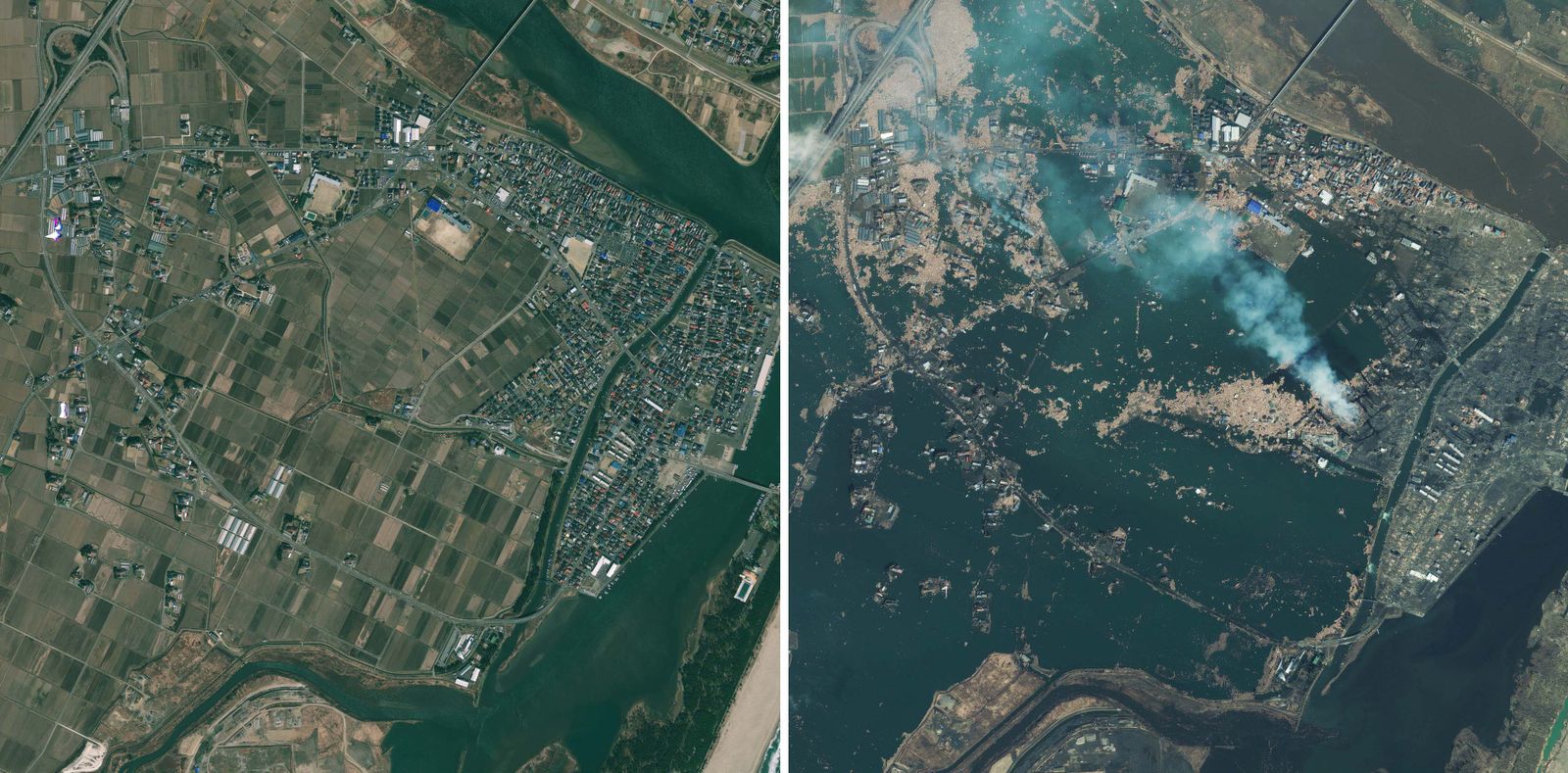
In this combination of photos provided by GeoEye, Natori, Japan is seen. The photo on the left was taken April 4, 2010. The photo on right was taken Saturday, March 12, 2011, one day after an 8.9-magnitude earthquake struck the Oshika Peninsula.
GeoEye Associated Press
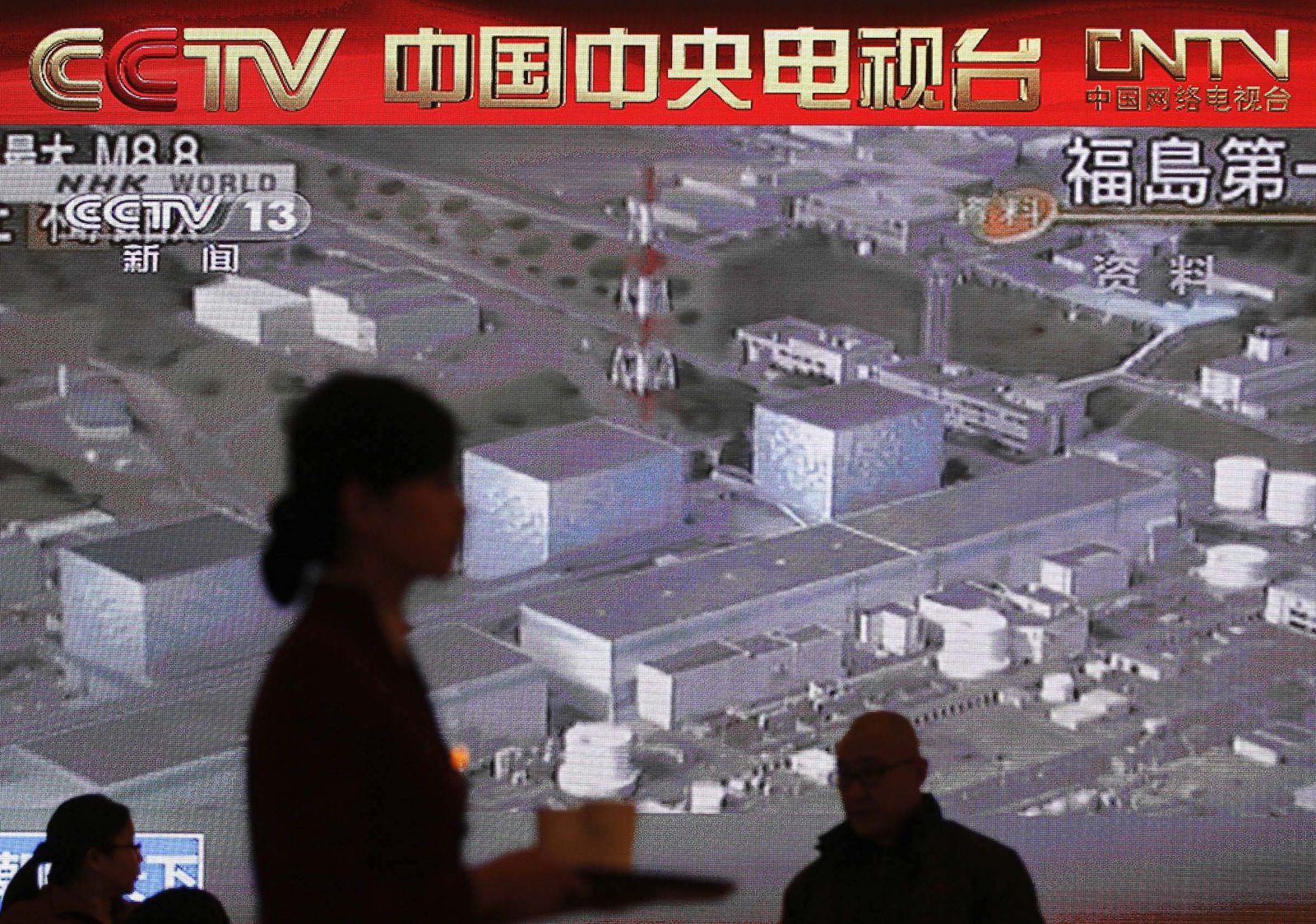
Hostess and delegate walk past a TV screen broadcasting Japan’s Fukushima nuke plant explosion reports following Friday’s catastrophic earthquake and tsunami inside the Great Hall of the People during closing session of the Chinese People’s Political Consultative Conference (CPPCC) in Beijing Sunday, March 13, 2011.
Andy Wong Associated Press
Associated Press
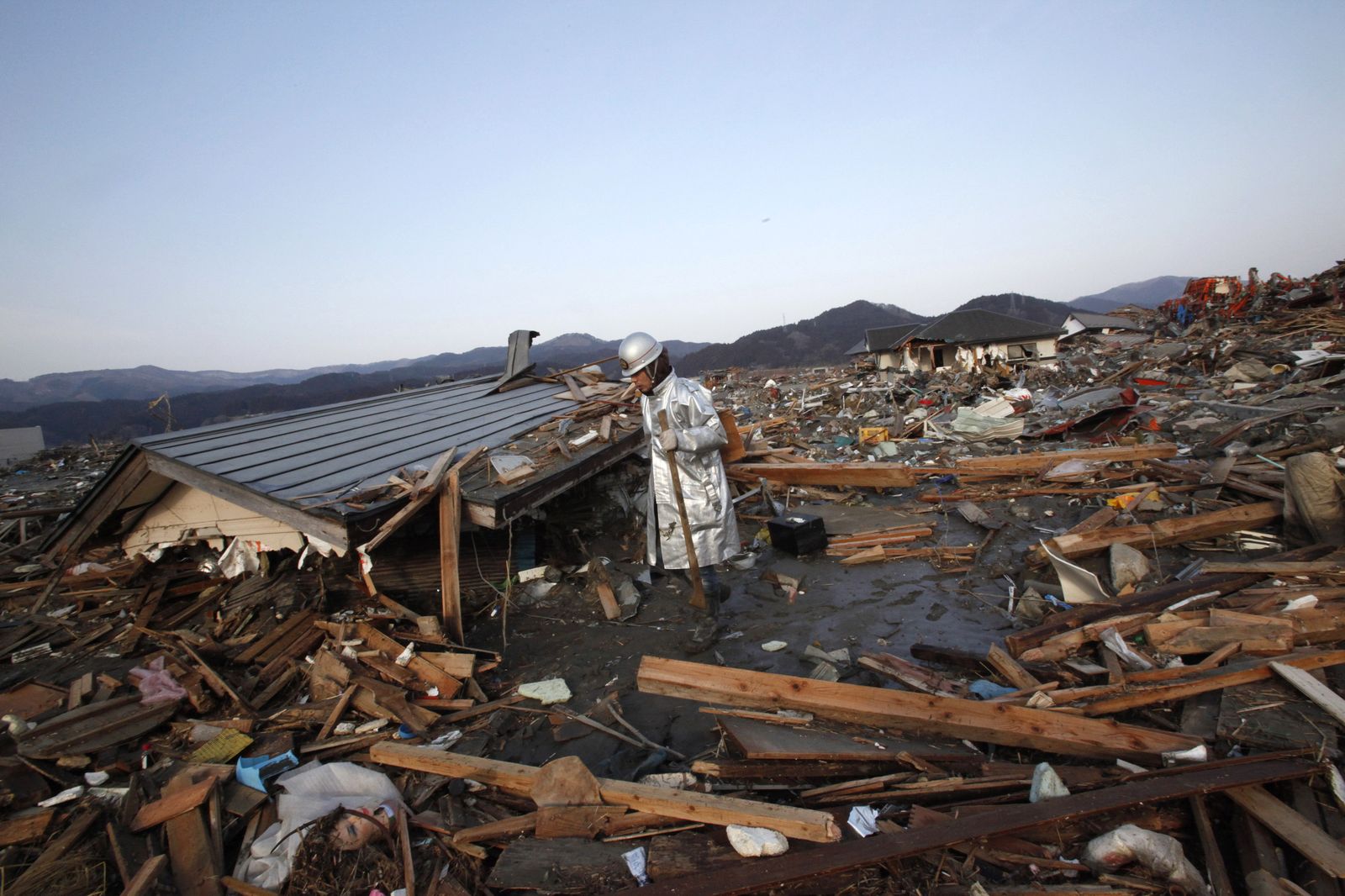
A volunteer firefighter searches for victims of Friday’s tsunami at Rikuzentakada, Iwate Prefecture, northern Japan, Sunday, March 13, 2011.
Shizuo Kambayashi Associated Press
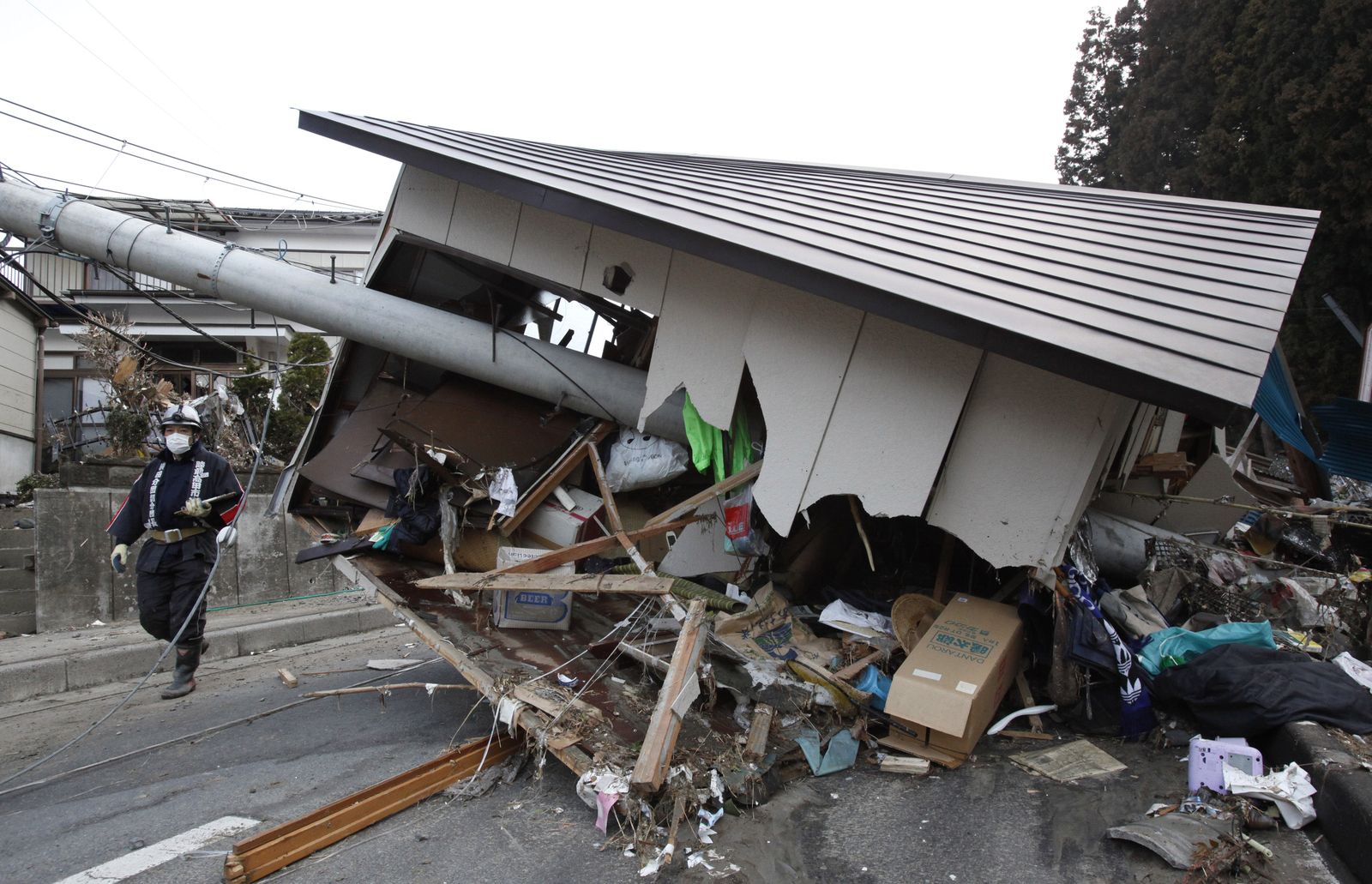
A volunteer firefighter walks past a house pierced by a utility pole fallen after Friday’s strong earthquake in Rikuzentakada, Iwate Prefecture, northern Japan, Sunday, March 13, 2011.
Shizuo Kambayashi Associated Press
Associated Press
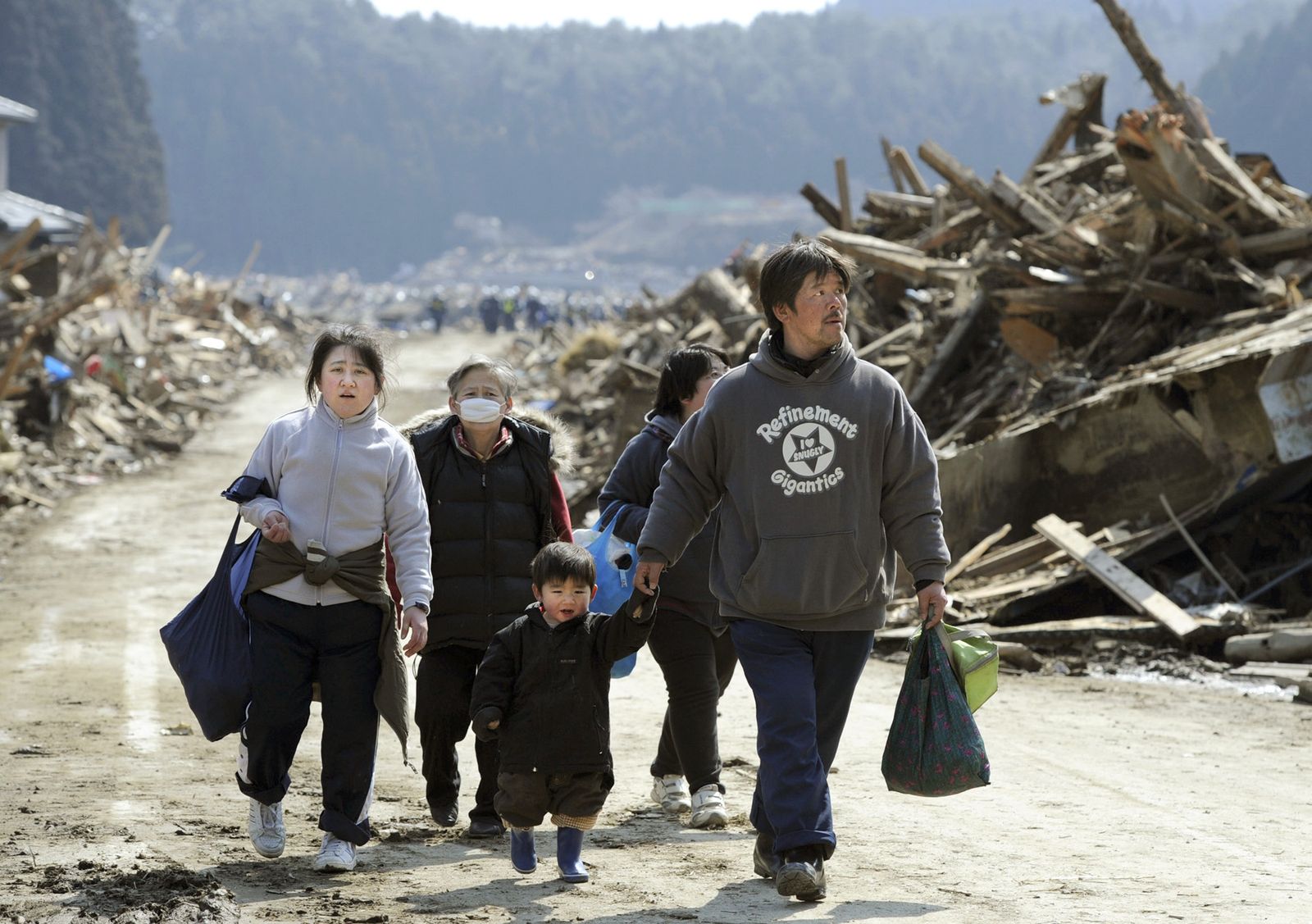
Sufferers walk through a devastated urban area in Minami Sanriku, Miyagi, northern Japan Sunday, March 13, 2011 after Friday’s catastrophic earthquake and tsunami.
Kyodo News Associated Press
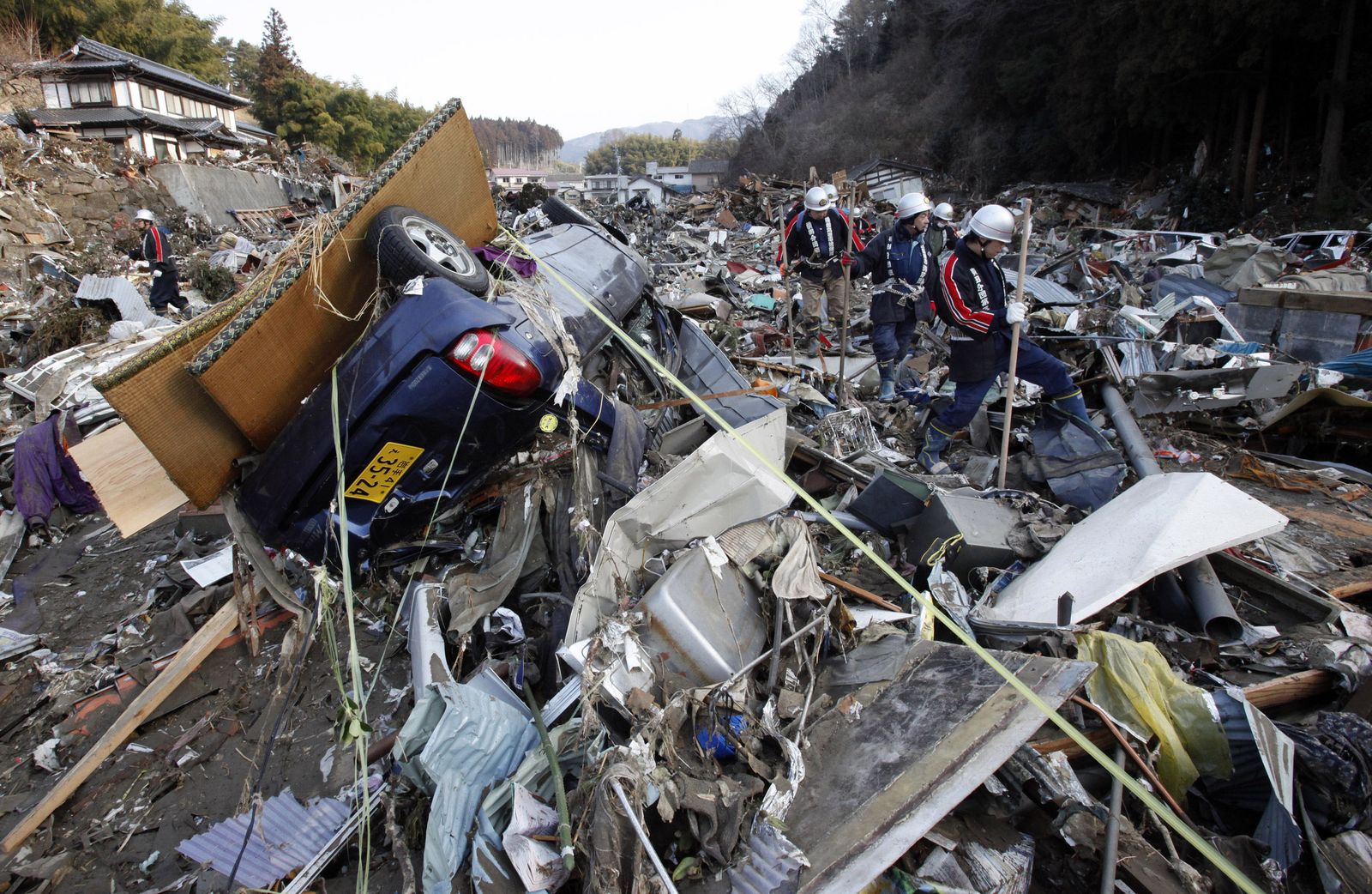
Volunteer firefighters search for victims of tsunami triggered by Friday’s massive earthquake at Rikuzentakada, Iwate Prefecture, northern Japan, Sunday, March 13, 2011.
Shizuo Kambayashi Associated Press
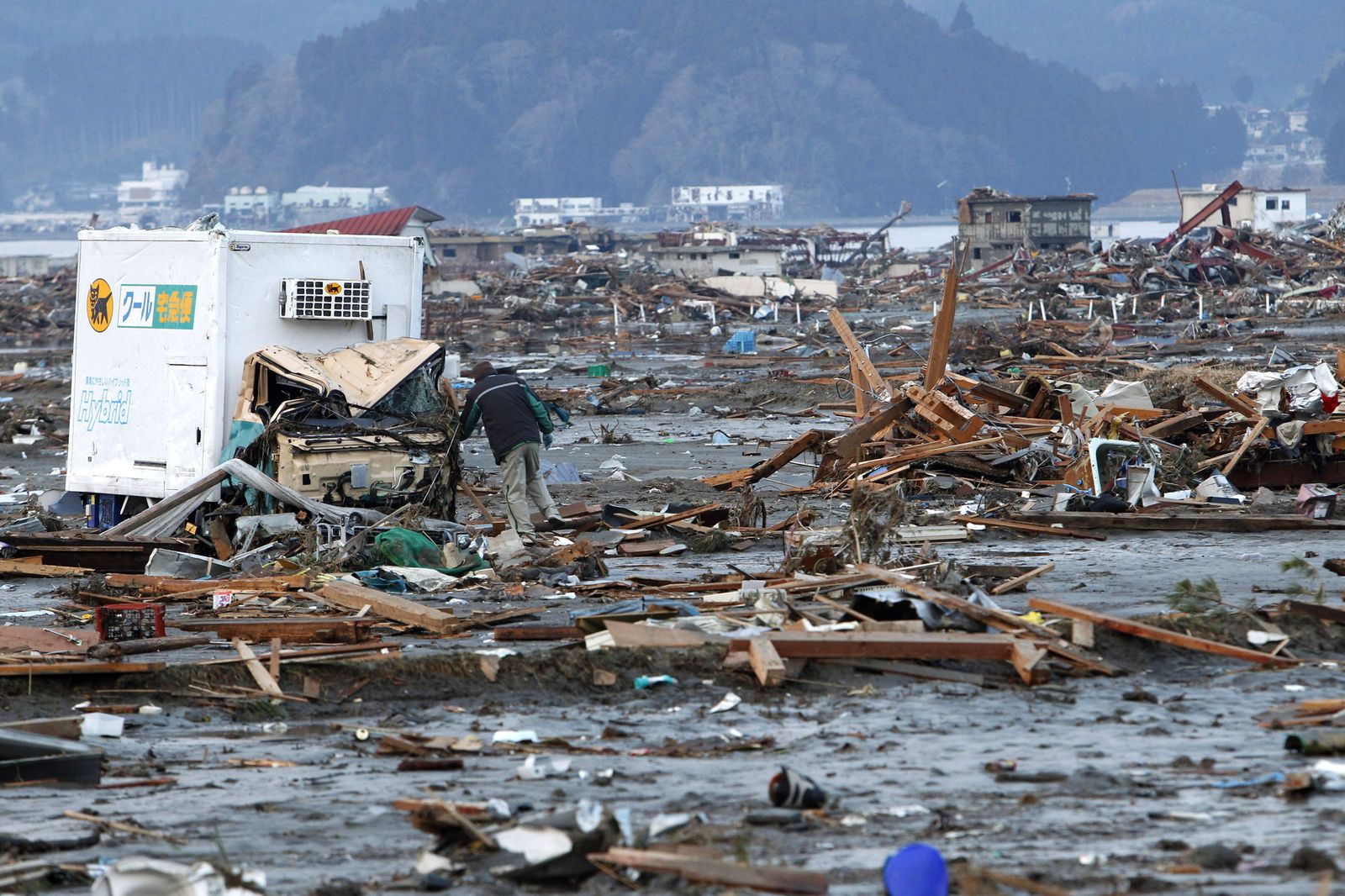
A man who said he lost his wife in Friday’s tsunami searches for the remains his loved one in the ruined area at Rikuzentakada, Iwate Prefecture, northern Japan, Sunday, March 13, 2011.
Shizuo Kambayashi Associated Press
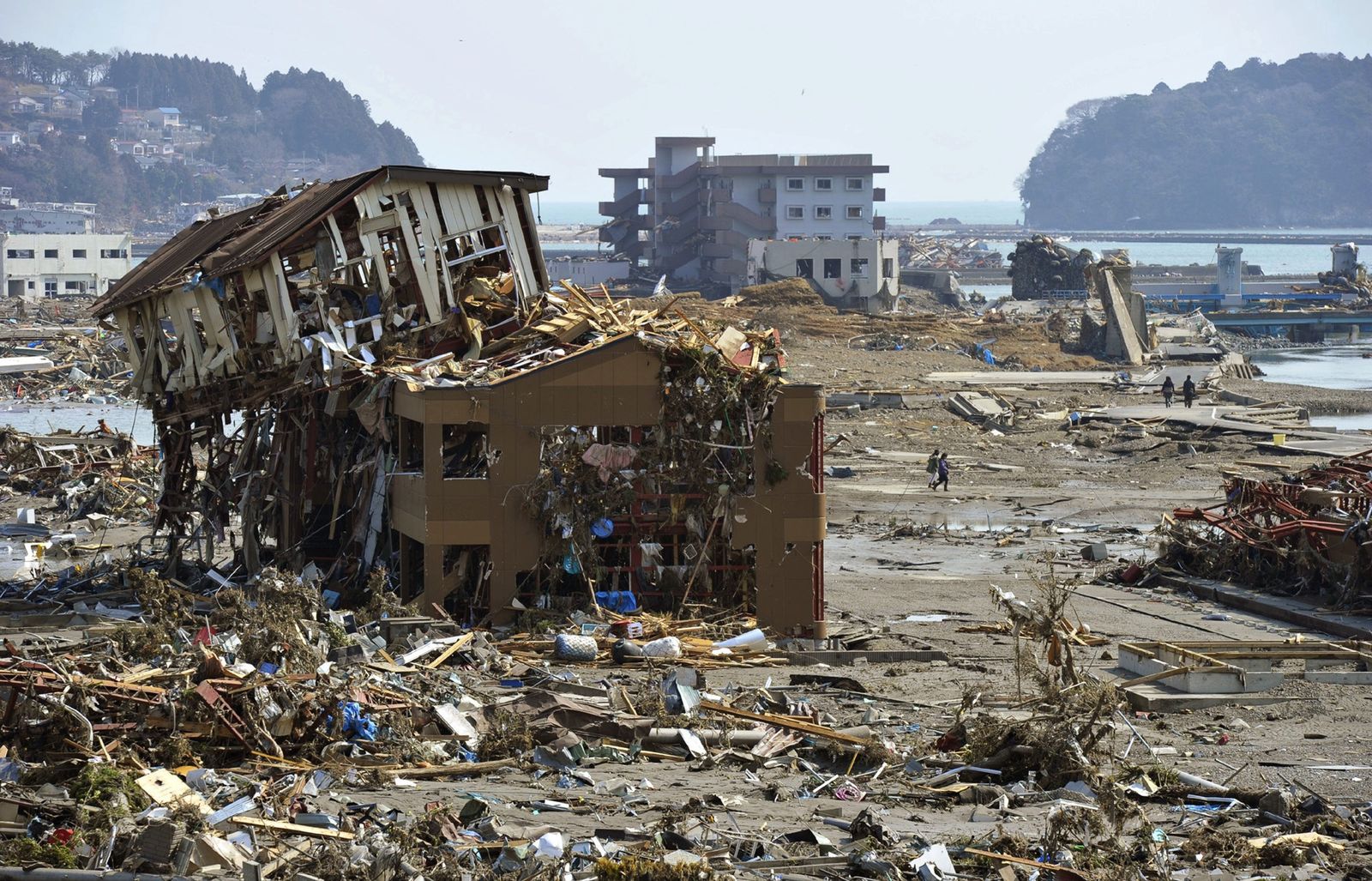
An urban area devastated by tsunami is seen in Minami Sanriku, Miyagi, northern Japan Sunday, March 13, 2011 after Friday’s catastrophic earthquake and tsunami.
Kyodo News Associated Press
Associated Press
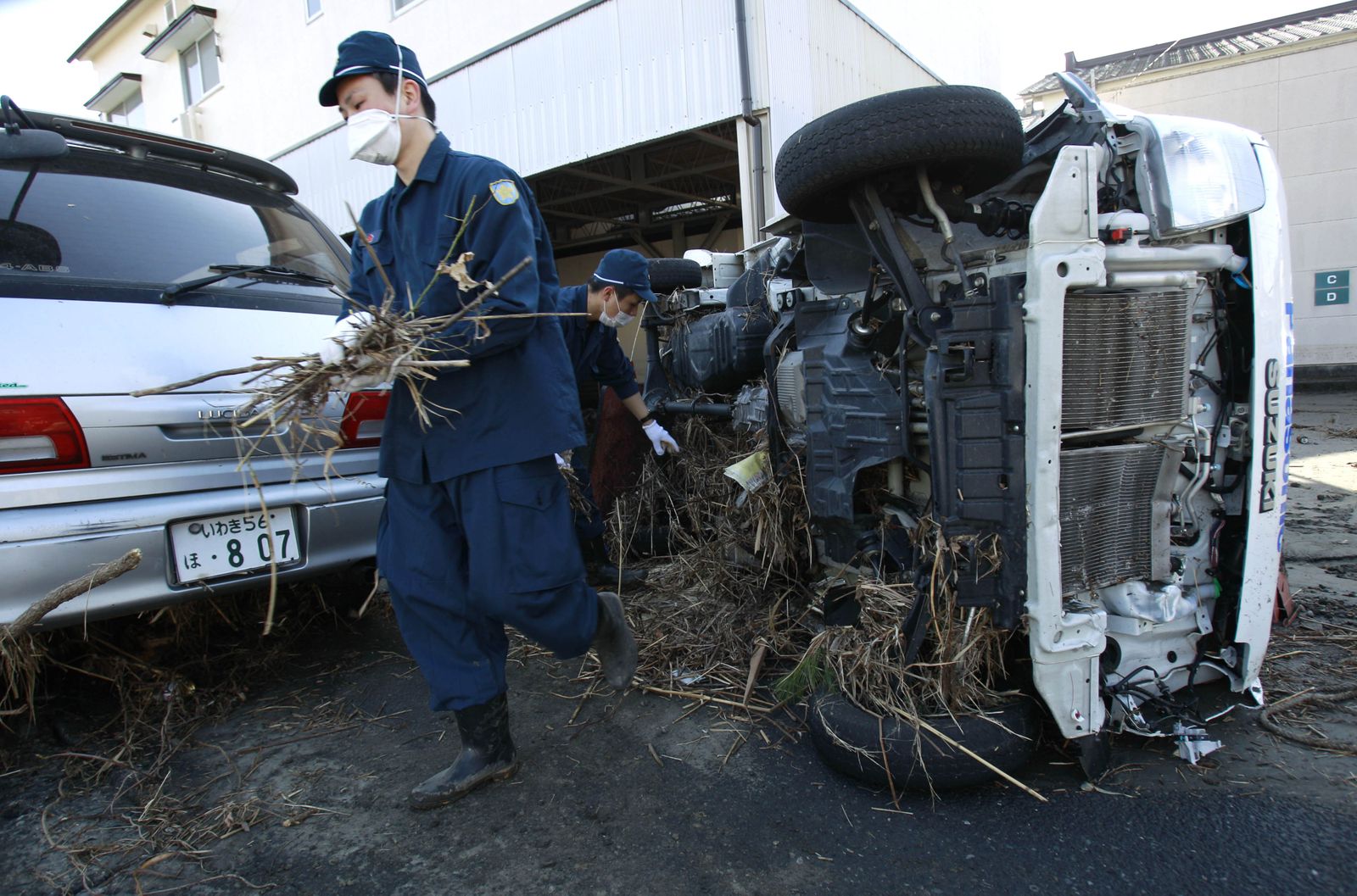
Police officers in Iwaki city, Fukushima prefecture, Japan, start to clean debris from tsunami waters following Friday’s massive earthquake, Sunday, March 13, 2011.
Wally Santana Associated Press
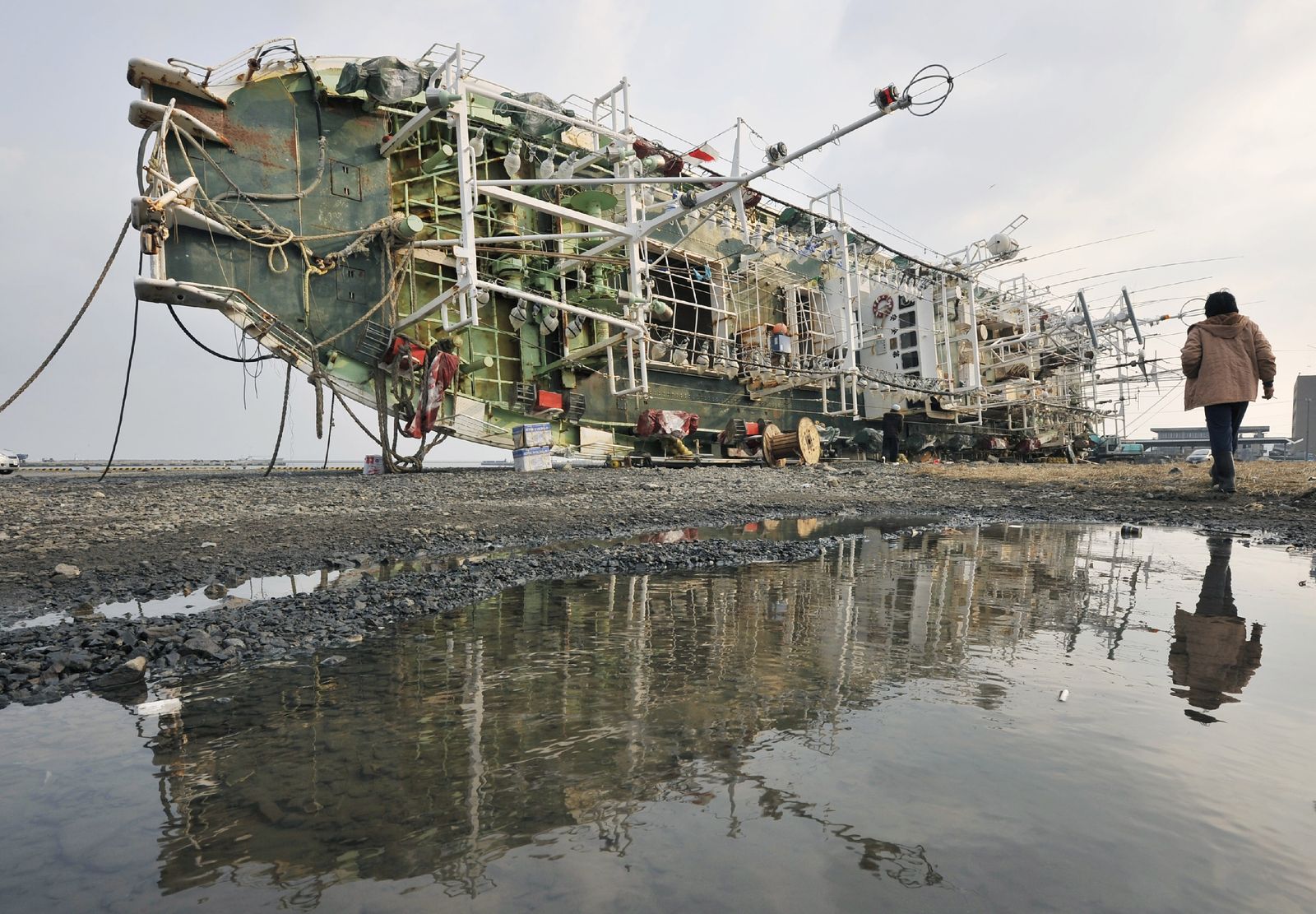
A fishing boat which was washed away by tsunami, sits overturned in Hachinohe, Aomori, northern Japan Sunday, March 13, 2011 after Friday’s catastrophic earthquake and tsunami.
Kyodo News Associated Press
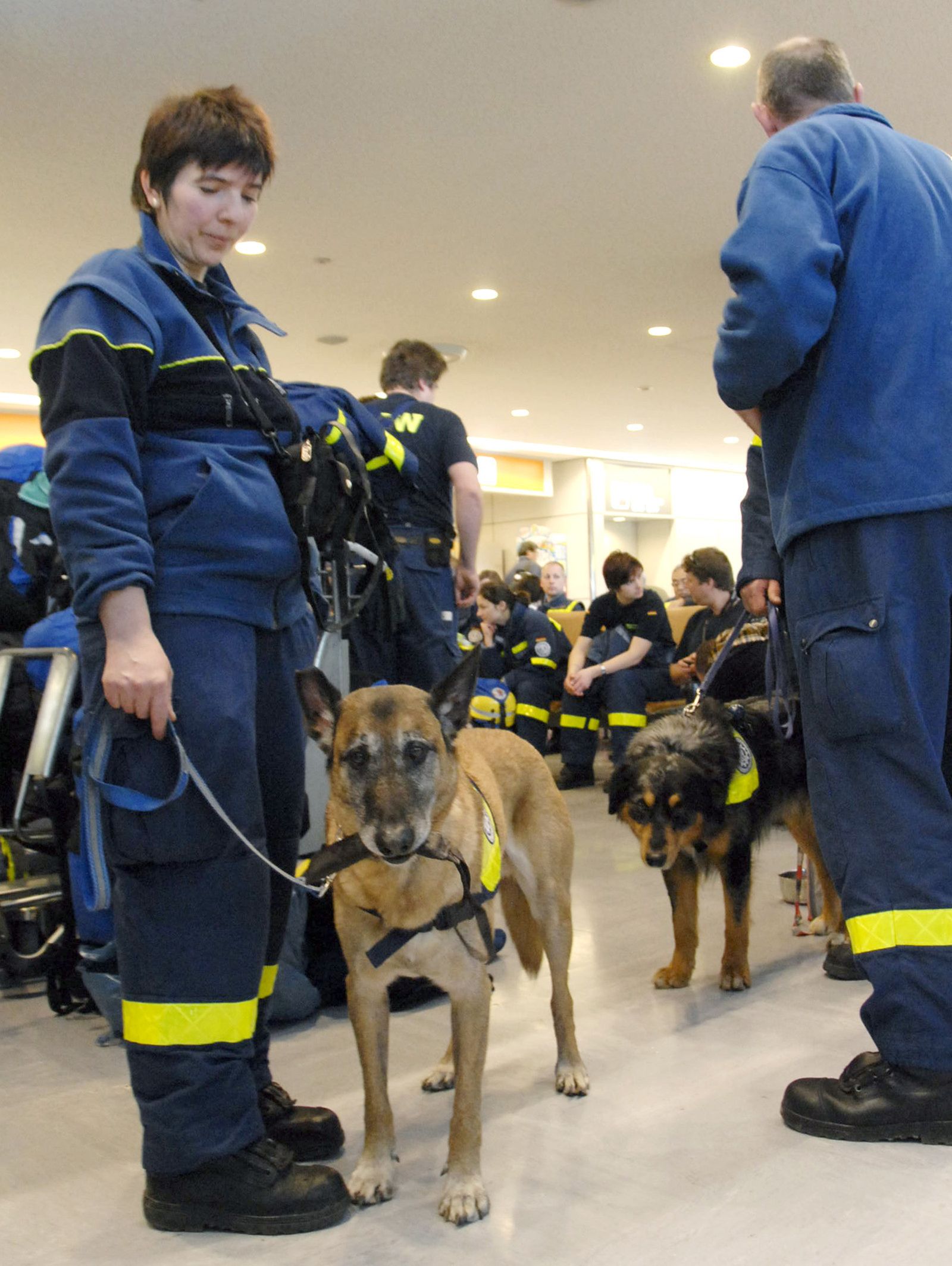
A rescue team from Germany arrives at Tokyo’s international airport at Narita before heading to disaster areas in northeastern Japan on Sunday March 13, 2011.
Kyodo News Associated Press
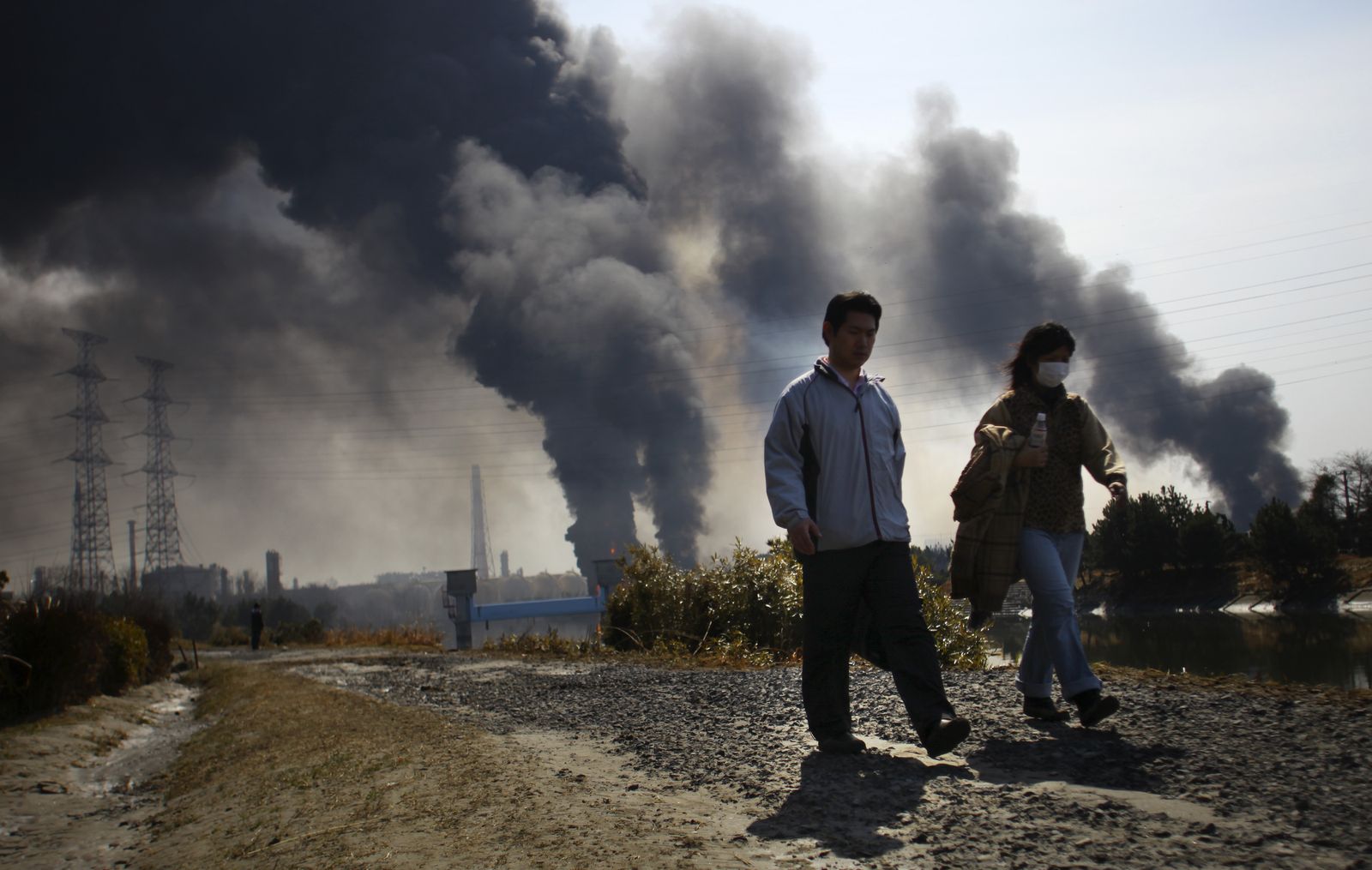
Mayumi Yagoshi, right, and an unidentified man walk together on a riverbank after inspecting burning oil refinery following a massive tsunami triggered by March 11 earthquake in Tagajo, near Sendai, northern Japan, Sunday, March 13, 2011.
Junji Kurokawa Associated Press
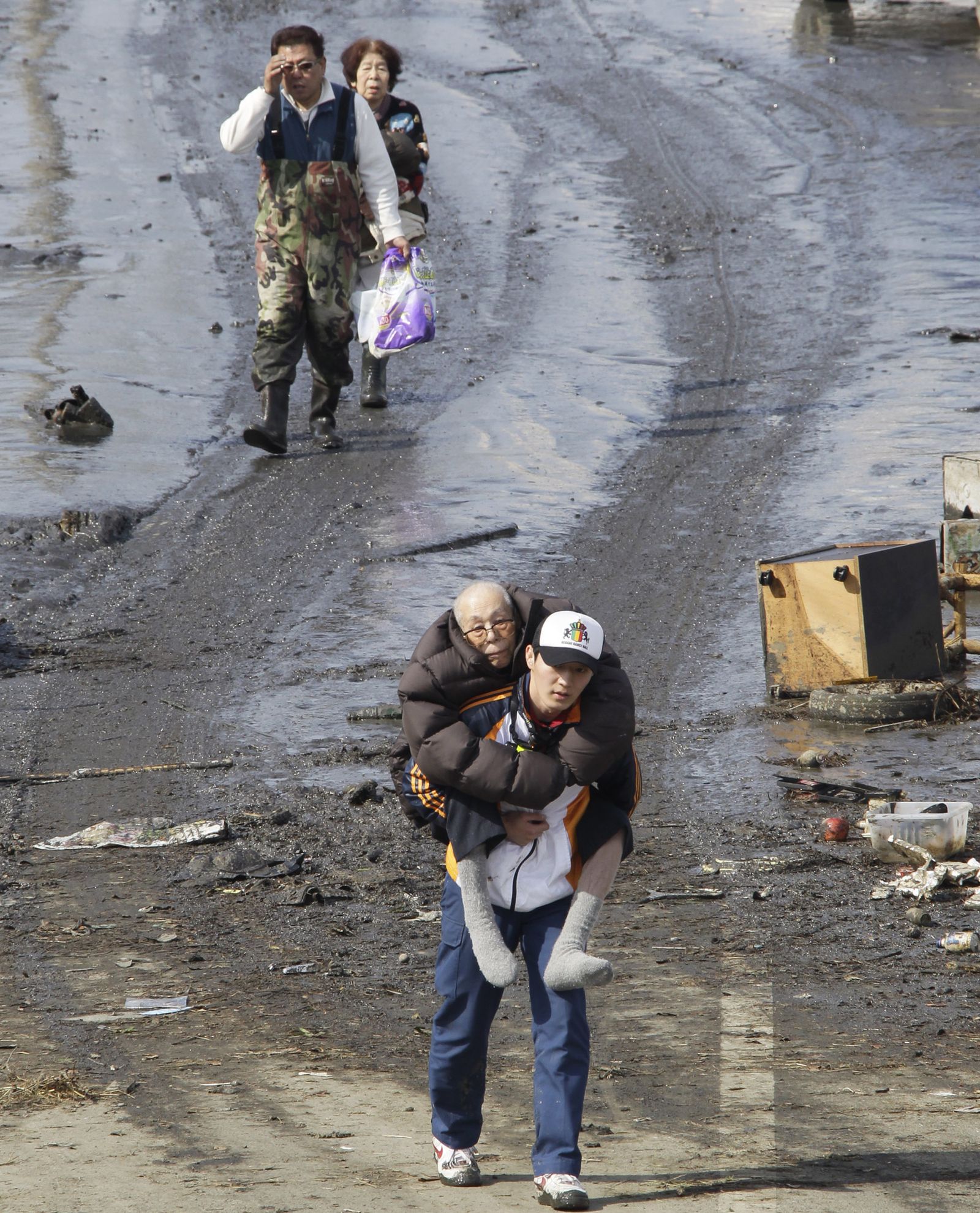
People evacuate from their houses in Tagajo near Sendai, northern Japan Sunday, March 13, 2011 after Friday’s catastrophic earthquake and tsunami.
Koji Sasahara Associated Press
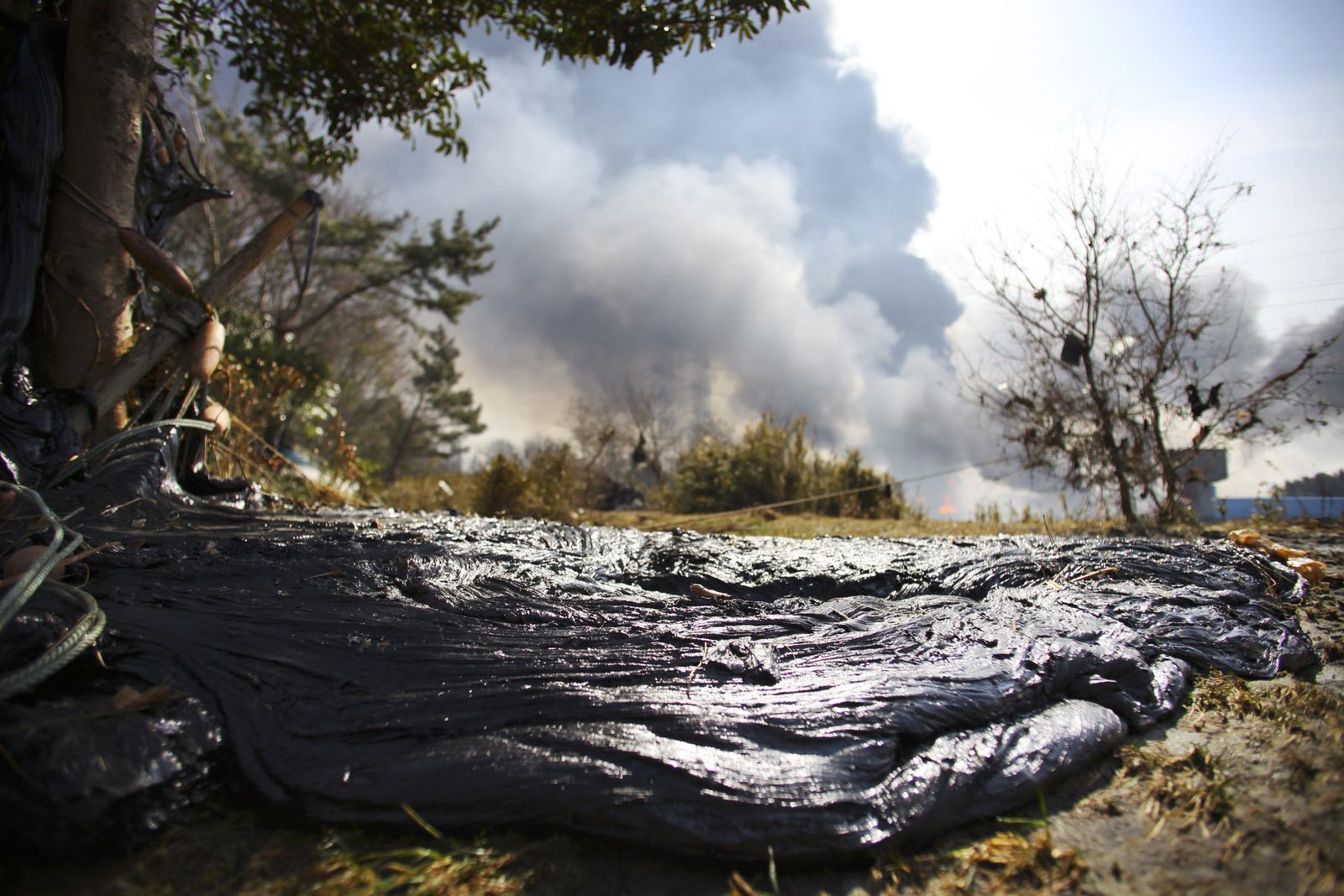
Oil tar lie in the other side of the river bank from burning oil refinery following a massive tsunami triggered by March 11 earthquake in Tagajo, near Sendai, northern Japan, Sunday, March 13, 2011.
Junji Kurokawa Associated Press
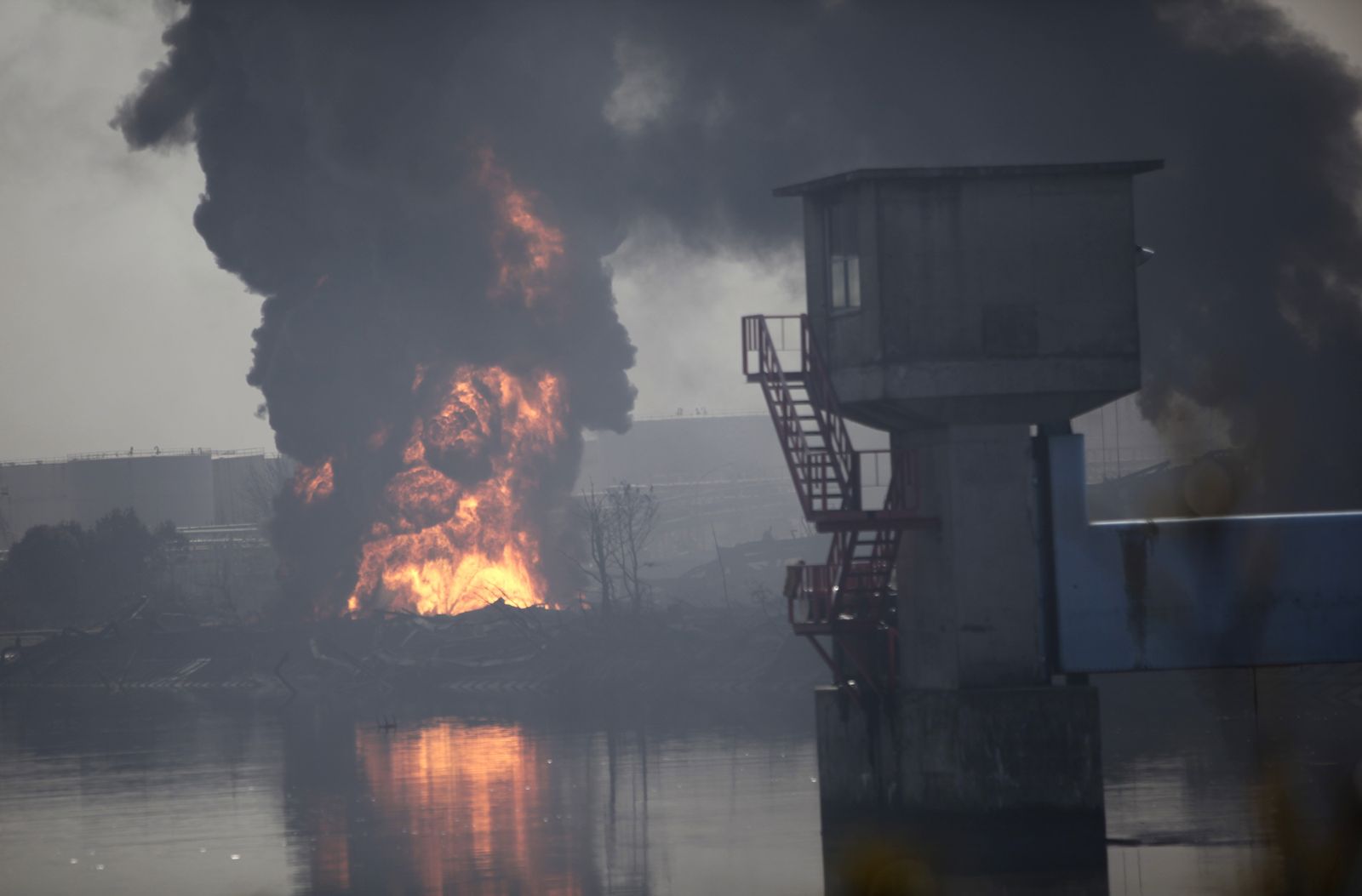
Smoke billows from burning oil refinery following a massive tsunami triggered by March 11 earthquake, in Tagajo, near Sendai, northern Japan, Sunday, March 13, 2011.
Junji Kurokawa Associated Press
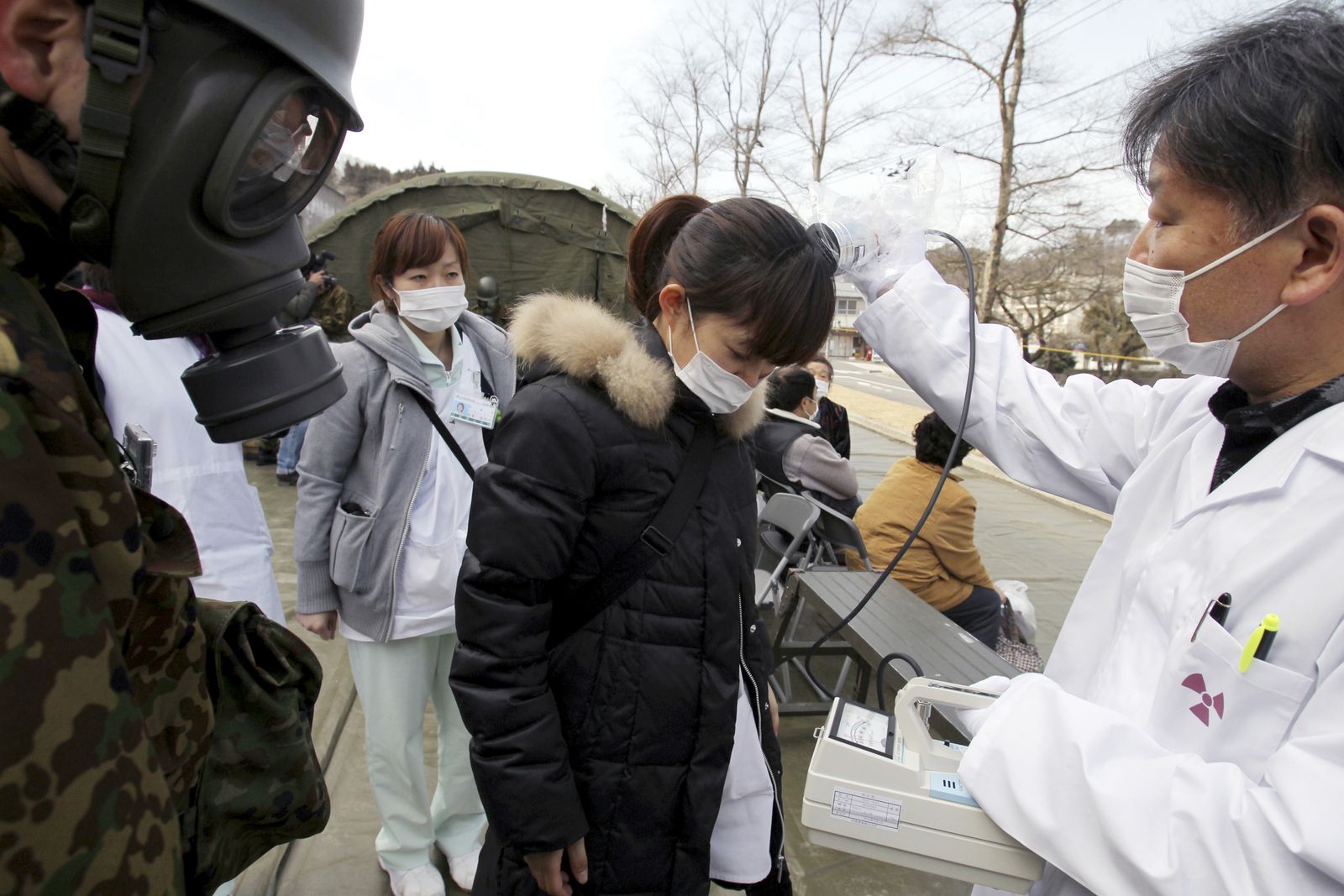
A hospital worker who was flown from a shelter by helicopter receives a check for radiation contamination, in Nihonmatsu, Fukushima, northern Japan Sunday, March 13, 2011 after Friday’s catastrophic earthquake and tsunami.
Asahi Shimbun, Toru Nakata Associated Press
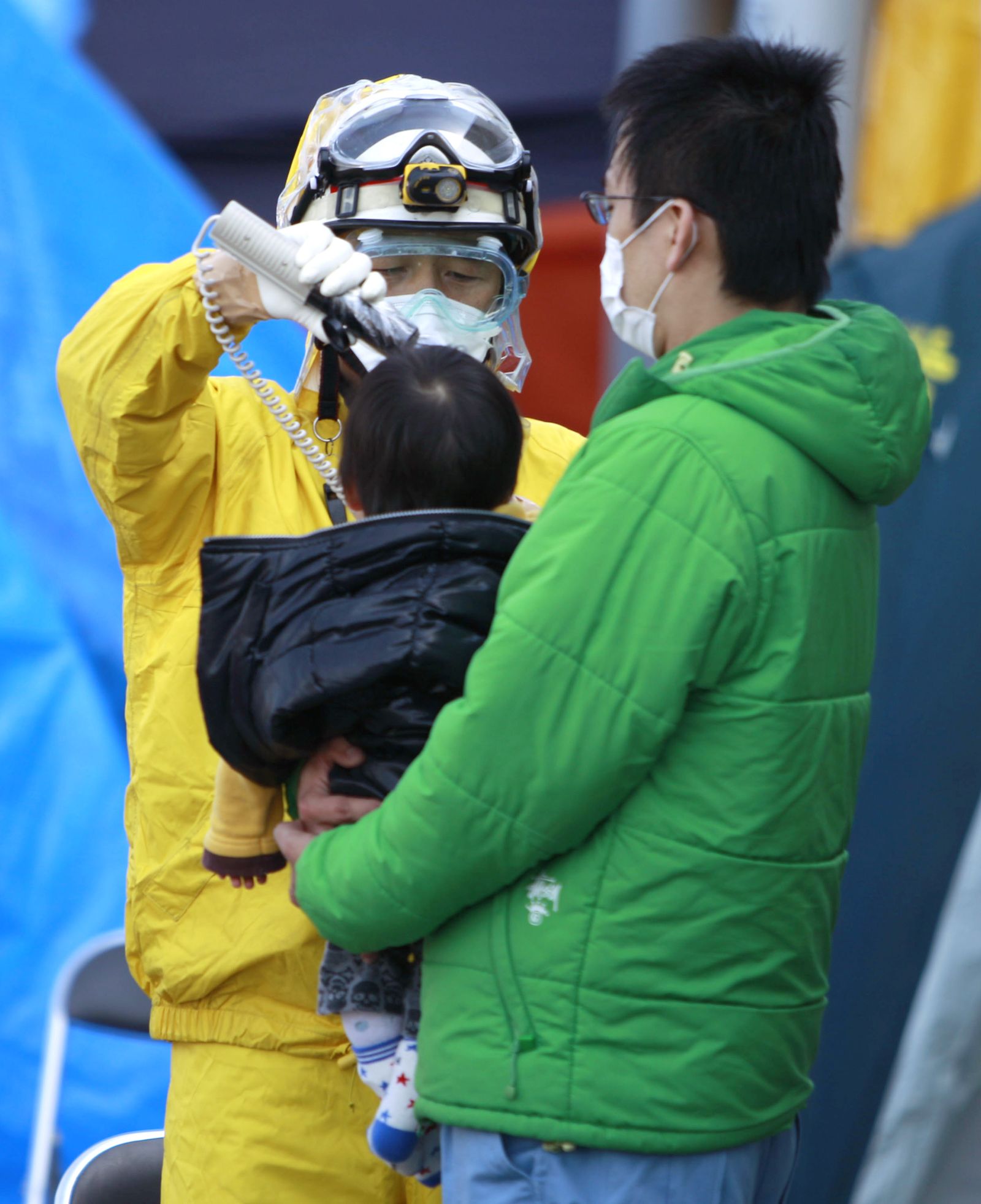
A child evacuated from areas surrounding the Fukushima nuclear facilities damaged in Friday’s massive earthquake is checked for radiation exposure with other residents Sunday, March 13, 2011, in Koriyama city, Fukushima prefecture, Japan.
Wally Santana Associated Press
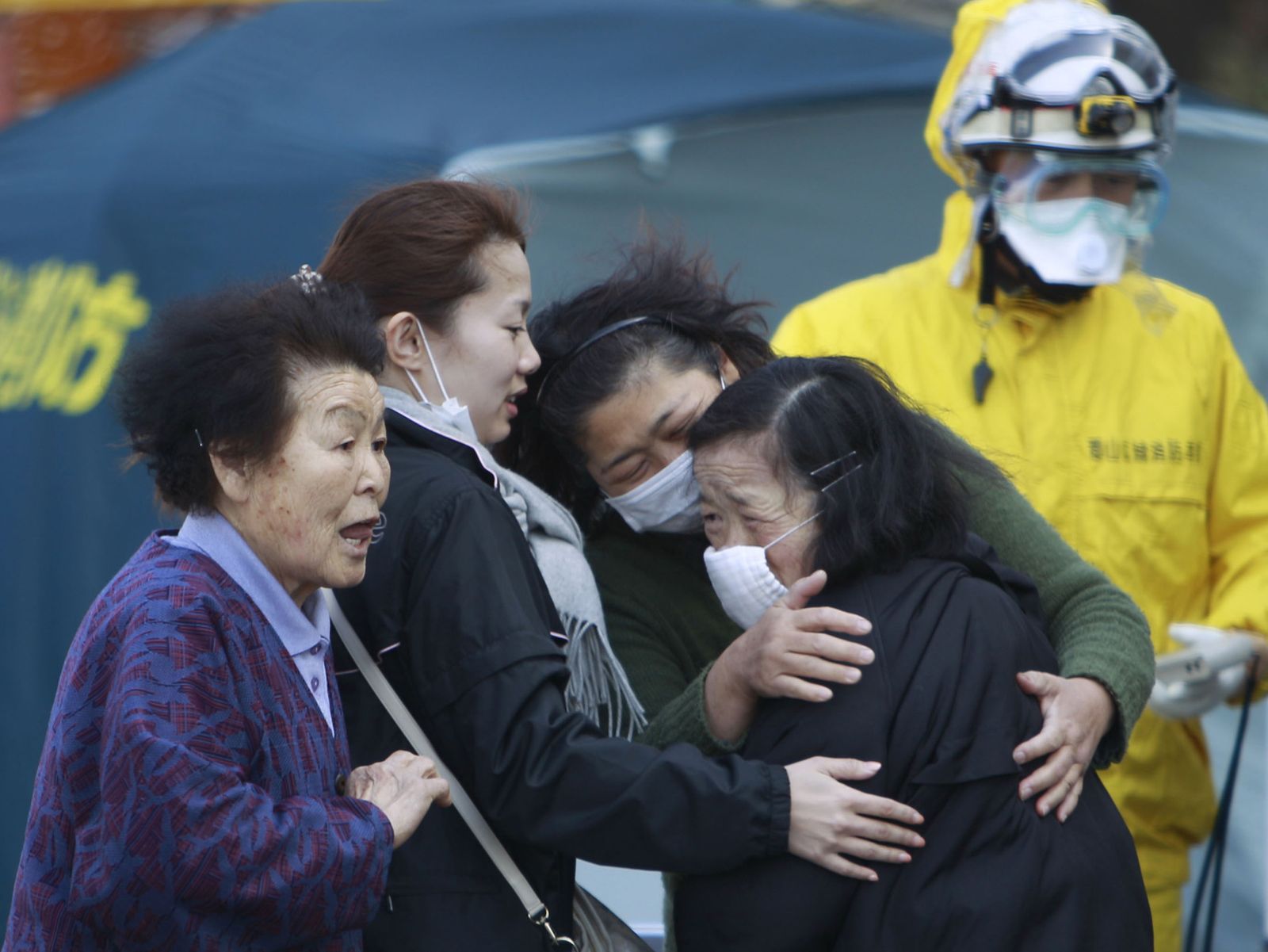
Residents evacuated from areas surrounding the Fukushima nuclear facilities damaged in Friday’s massive earthquake react during a check for radiation contamination, Sunday, March 13, 2011, in Koriyama city, Fukushima prefecture, Japan.
Wally Santana Associated Press
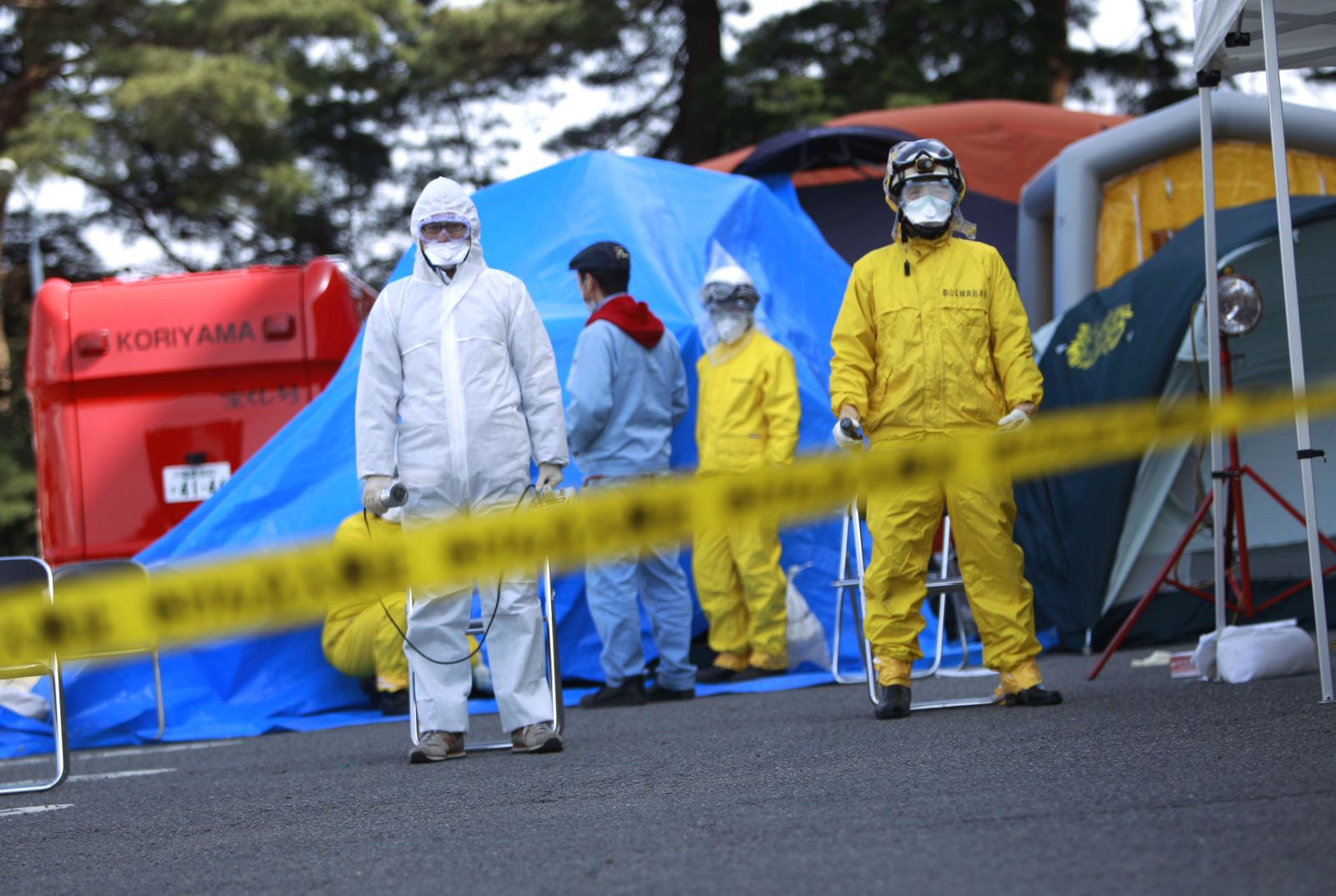
Fire department officials wait for arriving residents evacuated from areas surrounding the Fukushima nuclear facilities damaged in Friday’s massive earthquake are checked for radiation exposure Sunday, March 13, 2011, Koriyama city, Fukushima prefecture, Japan.
Wally Santana Associated Press
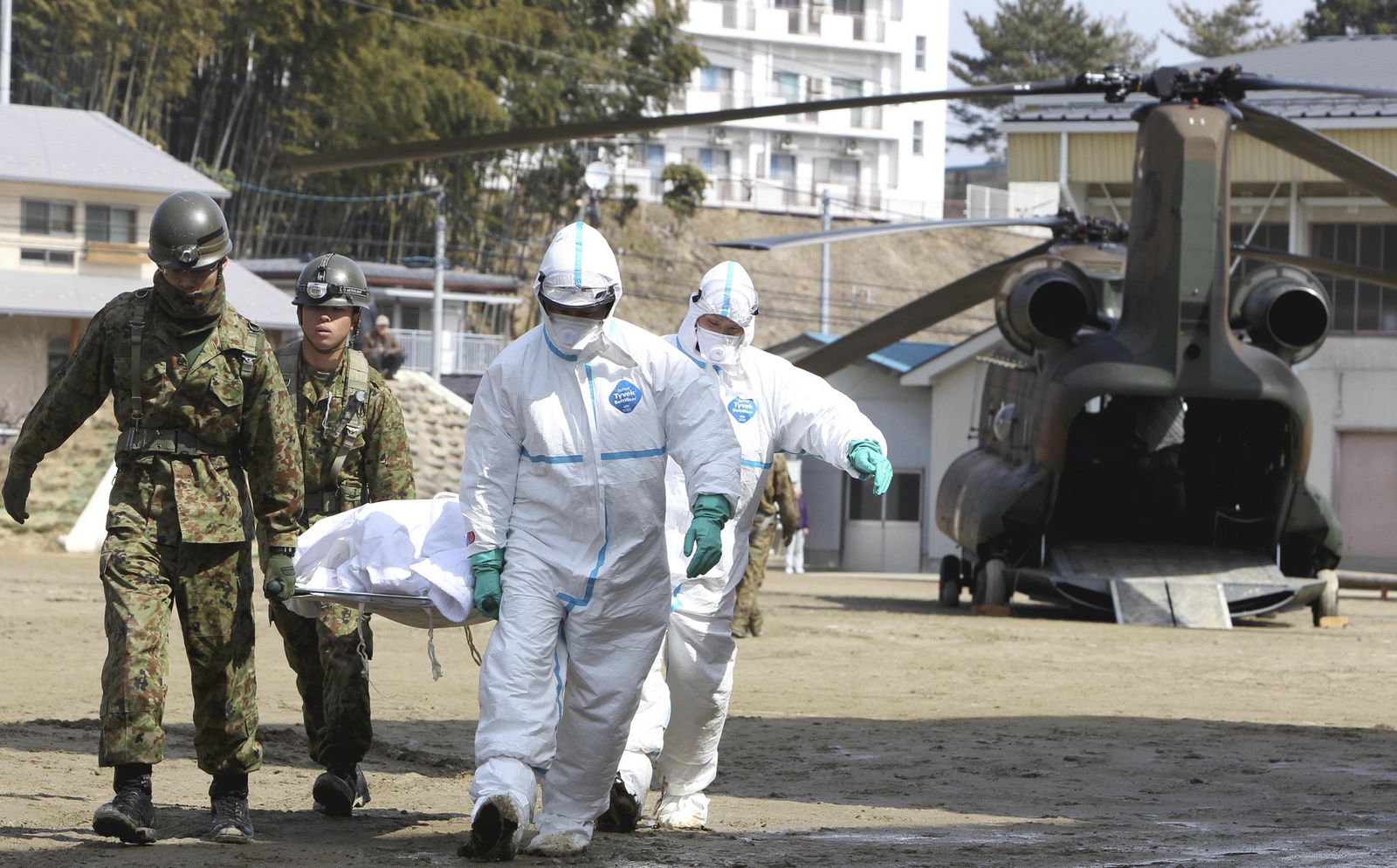
Self-defense force’s members and others carry a resident who is suspected to be exposed to radiation, in Nihonmatsu, Fukushima, northern Japan Sunday, March 13, 2011 following radiation emanation from a nuclear reactor after Friday’s catastrophic earthquake and tsunami.
Yomiuri Shimbun, Daisuke Tomita Associated Press
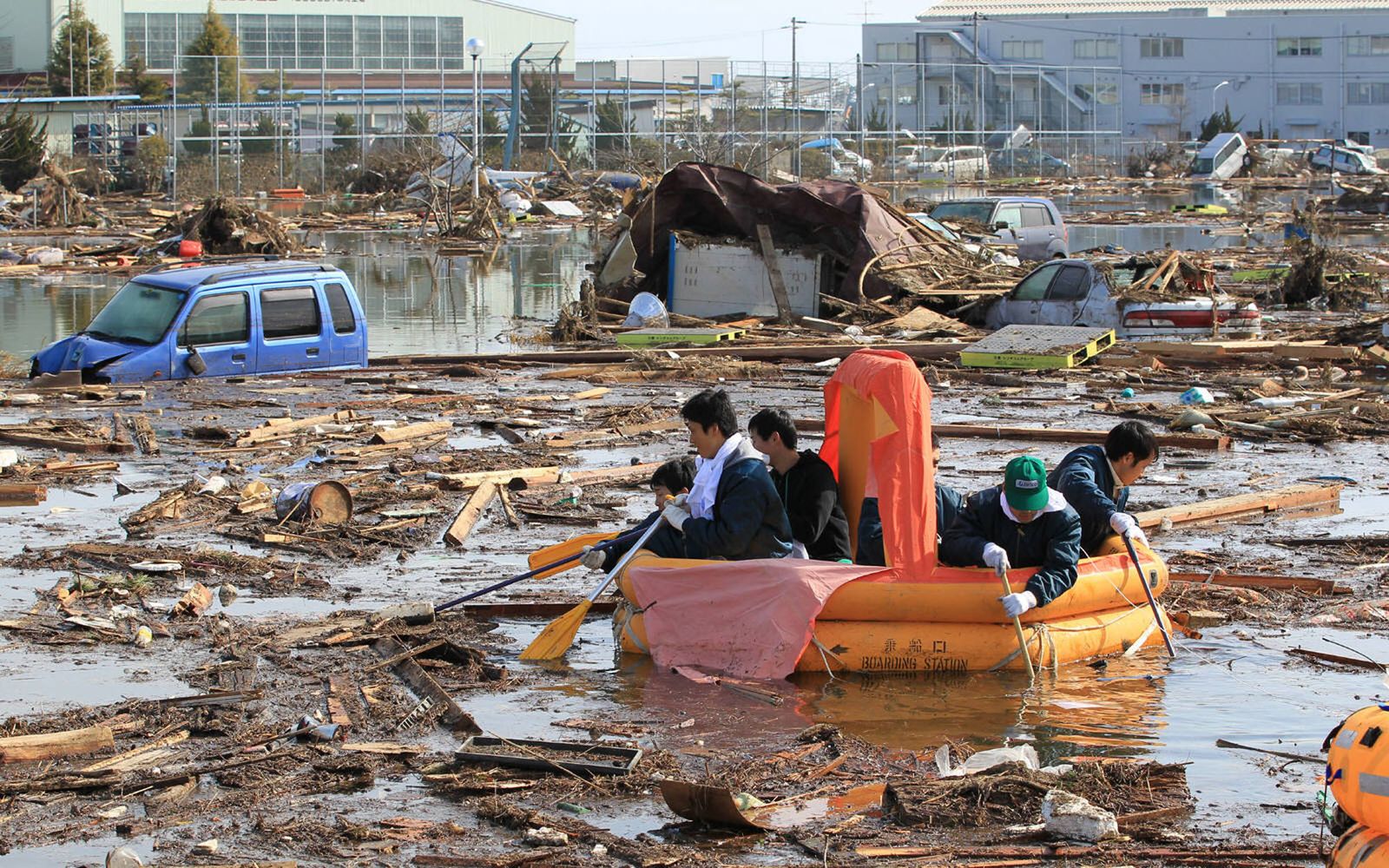
Civil Aviation College students and other people use a rubber raft to get food and other items from their dormitory that submerged following a catastrophic earthquake and tsunami, in Sendai, northeastern Japan, on Sunday March 13, 2011.
Mainichi Shimbun, Naotsune Umemura Associated Press

A platoon of Japanese soldiers make their way through rubble and destroyed vehicles following a catastrophic earthquake and tsunami, in Rikuzentakada, northeastern Japan, on Sunday March 13, 2011.
Mainichi Shimbun, Taichi Kaizuka Associated Press
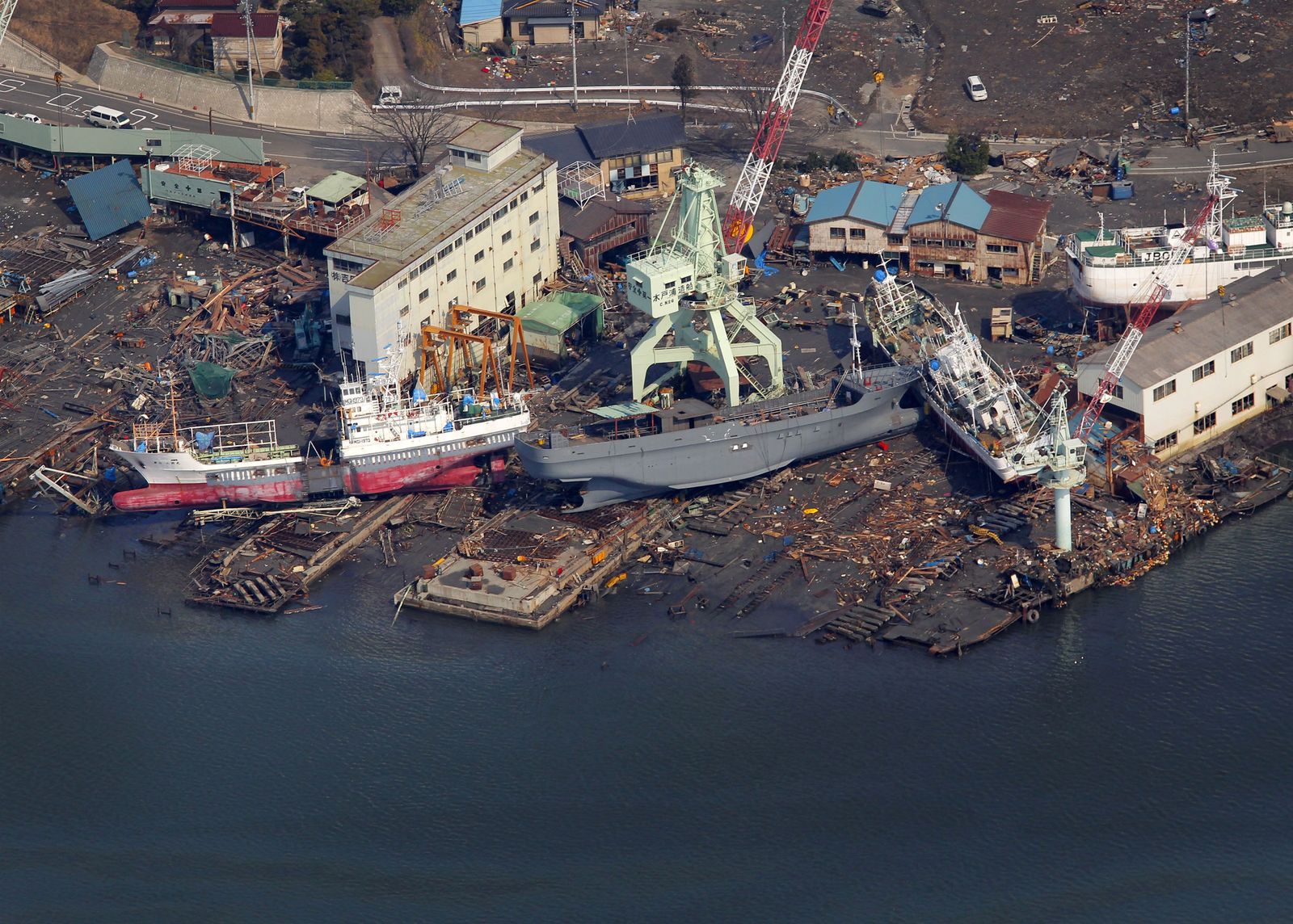
Ships washed away by tsunami sit on the land near a port in Kesennuma, Miyagi Prefecture, Sunday, March 13, 2011 after Japan’s biggest recorded earthquake hit its eastern coast Friday.
Itsuo Inouye Associated Press

Smoke rises from burning debris washed away by tsunami in Kesennuma, Miyagi Prefecture, Sunday, March 13, 2011 after Japan’s biggest recorded earthquake hit its eastern coast Friday.
Itsuo Inouye Associated Press
Associated Press
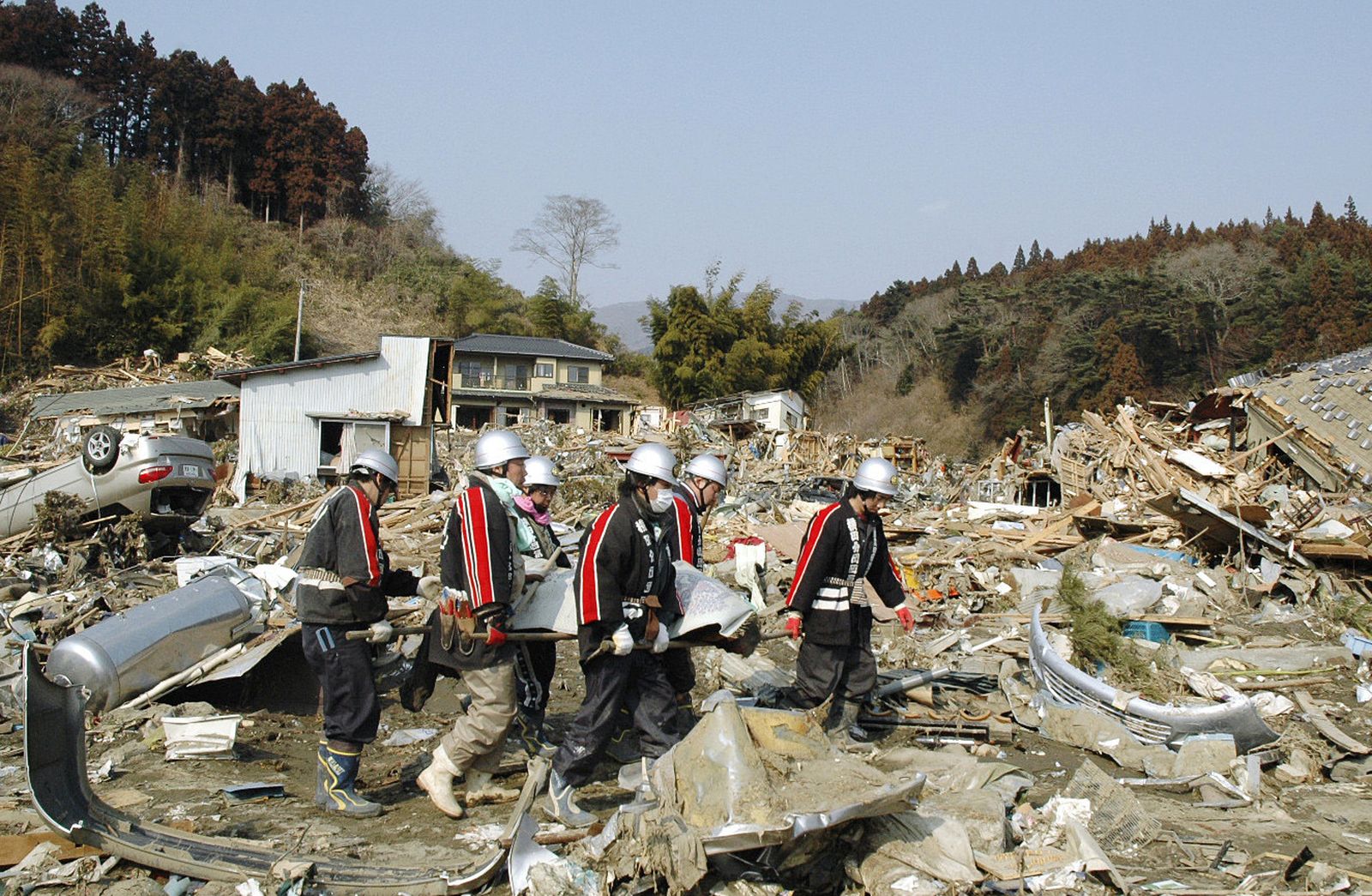
Members of a local firefigher group carry the body of a tsunami victim in Rikuzentakata, Miyagi Prefecture, northern Japan, Sunday, March 13, 2011, two days after a powerful earthquake-triggered tsunami hit the country’s east coast.
Kyodo News Associated Press
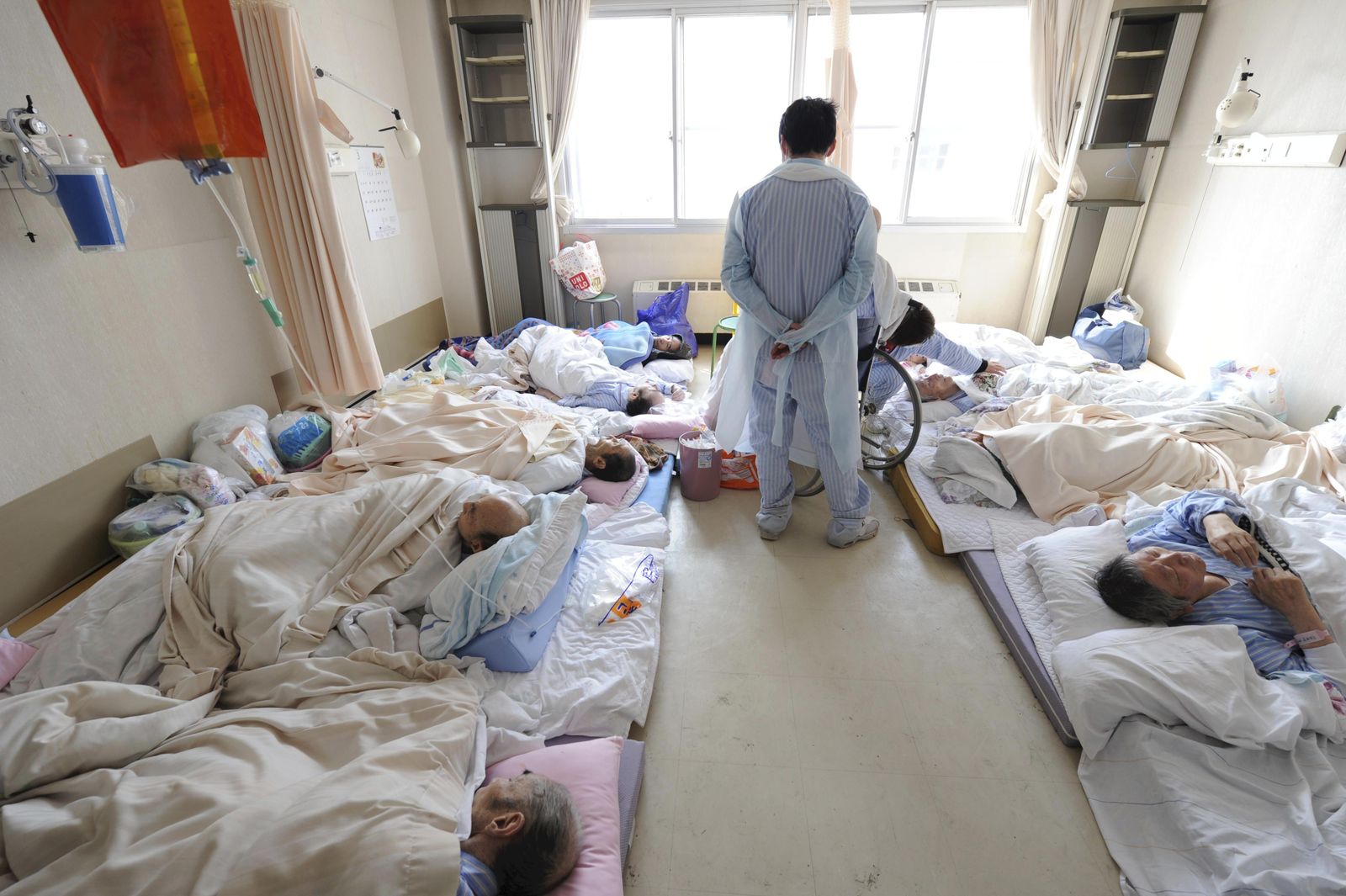
Patients at a hospital wait to be evacuated without medicine and electricity in Otsuchi in Iwate Prefecture (state) Sunday, March 13, 2011, two days after a strong earthquake and tsunami hit northeastern Japan.
The Yomiuri Shimbun, Yasuhiro Takami Associated Press
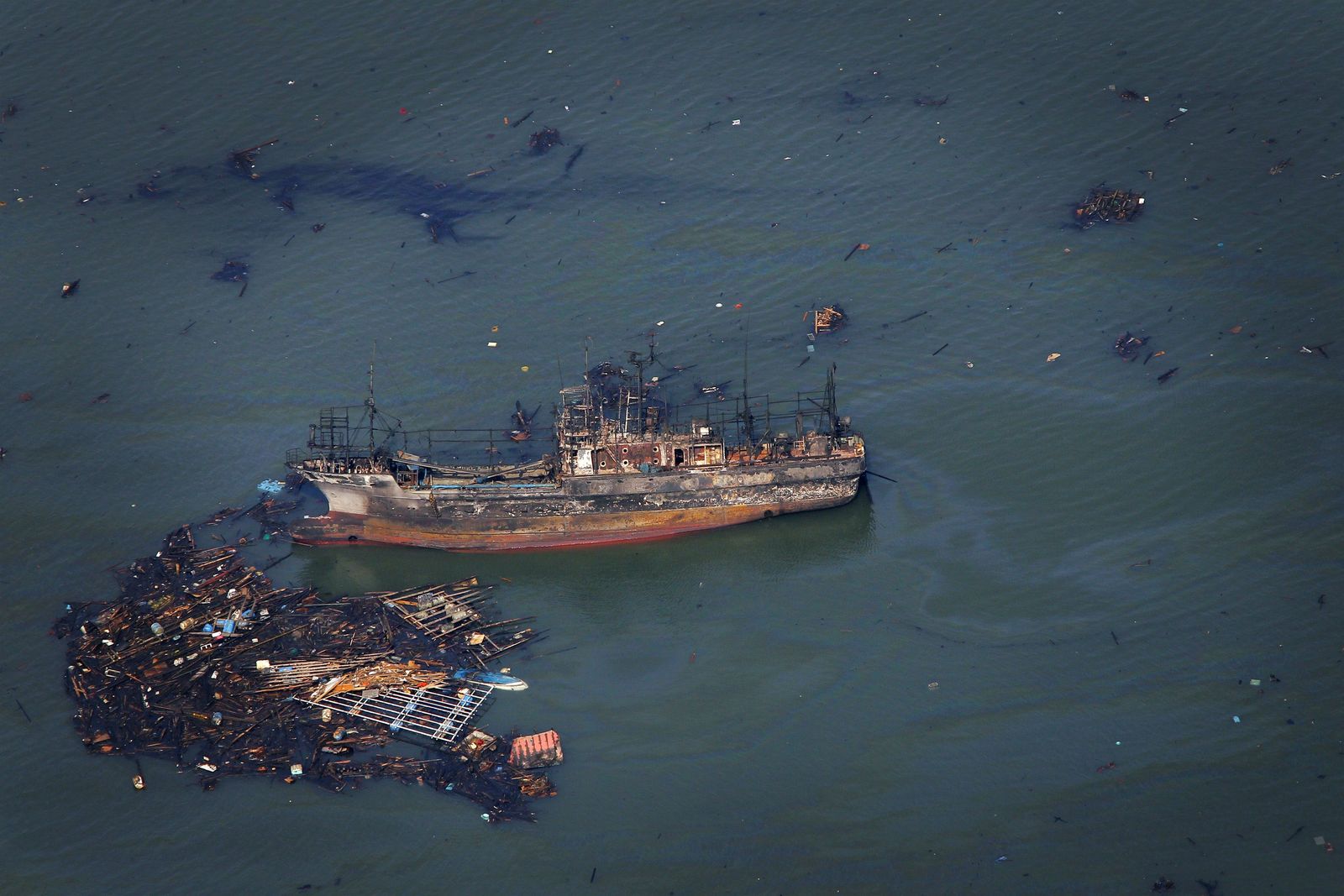
A burnt ship floats in the sea in Kesennuma, Miyagi prefecture, Sunday, March 13, 2011 after Japan’s biggest recorded earthquake hit its eastern coast Friday.
Itsuo Inouye Associated Press
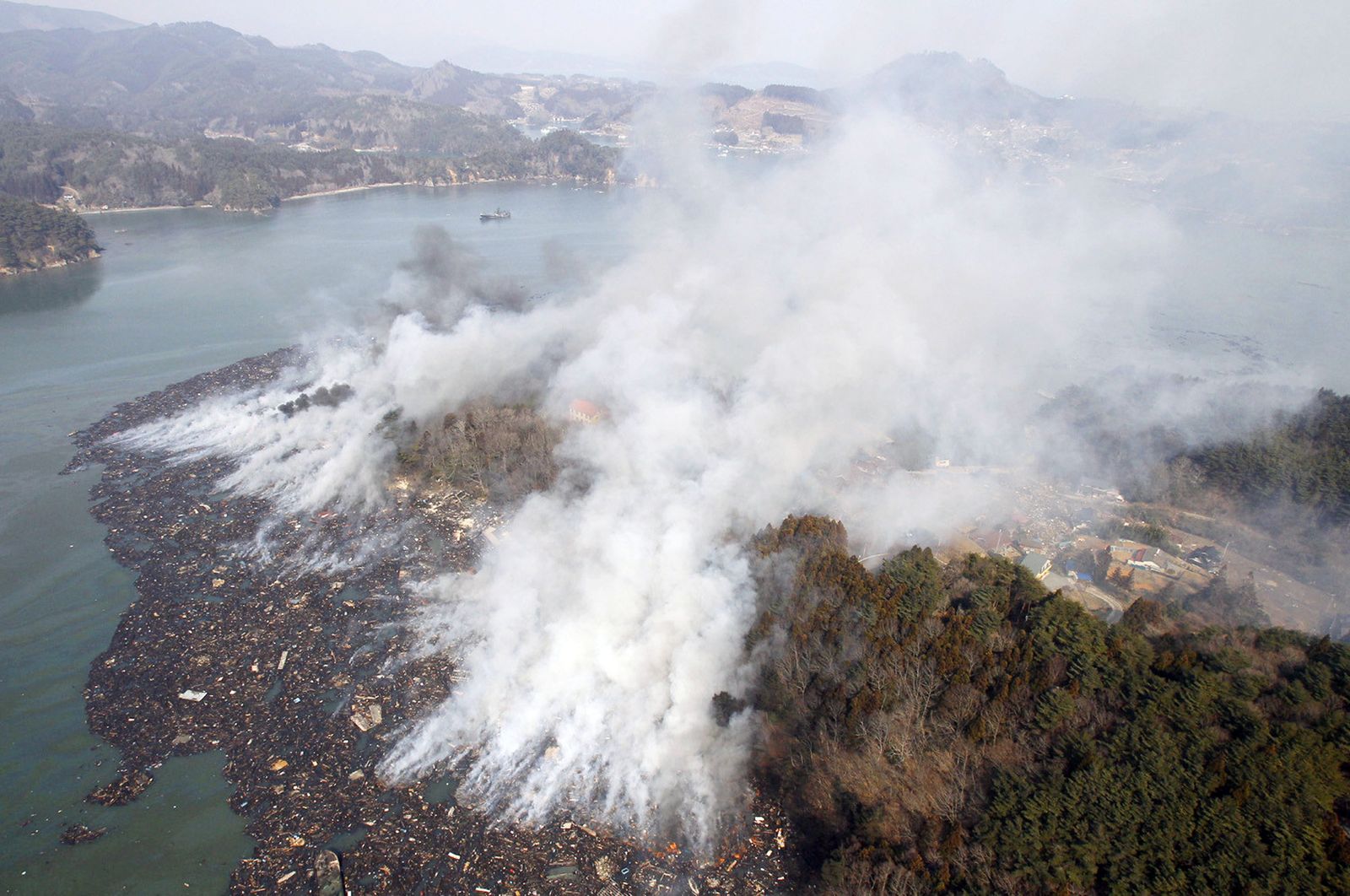
Smoke rises from a coastal area in Ishimaki, Miyagi prefecture, northern Japan, Sunday, March 13, 2011, two days after a powerful earthquake-triggered tsunami hit Japan’s east coast.
Kyodo News Associated Press
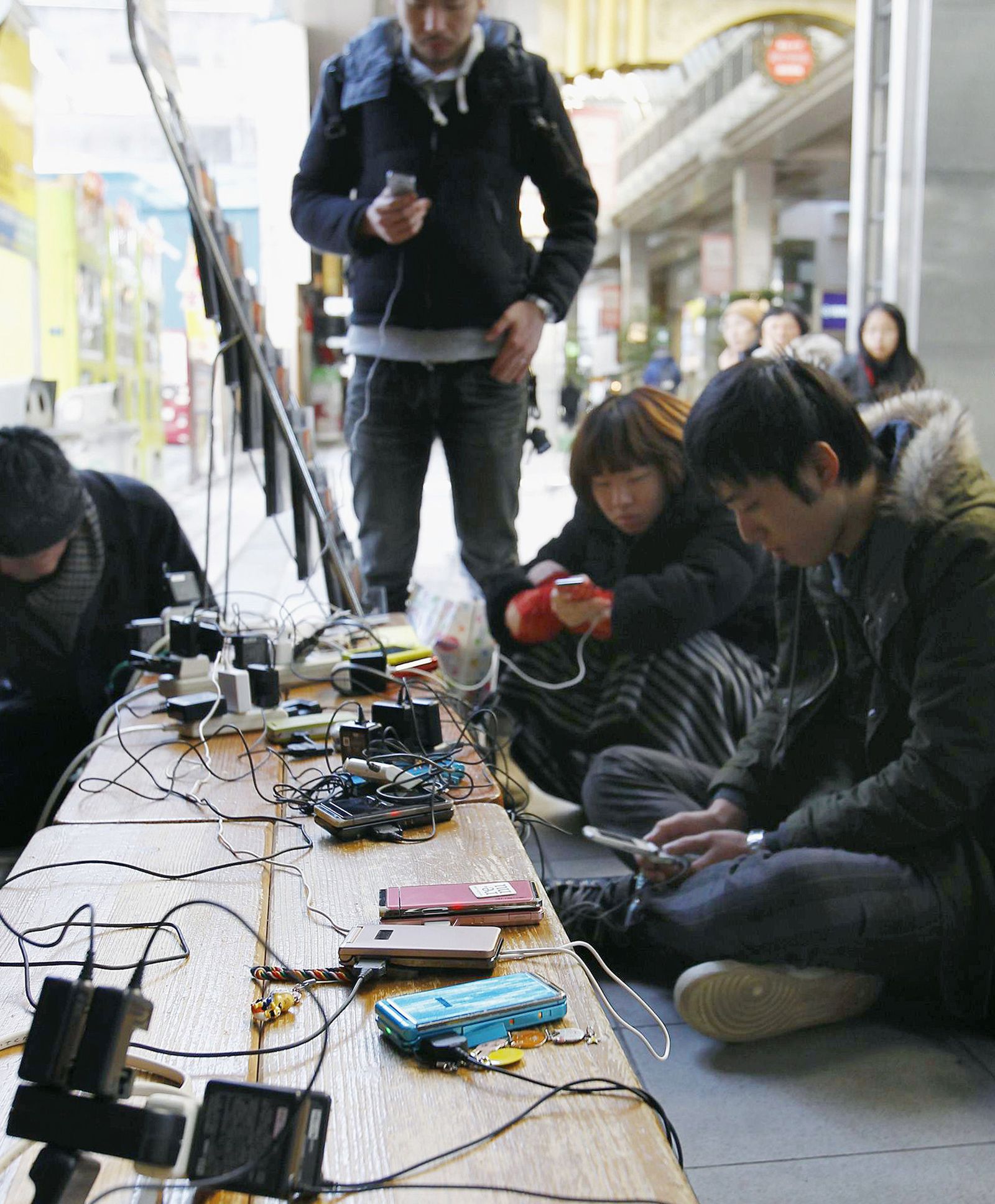
Residents charge up their mobile phones at a shopping street providing a free charging service at Sendai, northeastern Japan, on Sunday March 13, 2011, two days after a giant earthquake and tsunami struck the country’s northeastern coast.
Kyodo News Associated Press
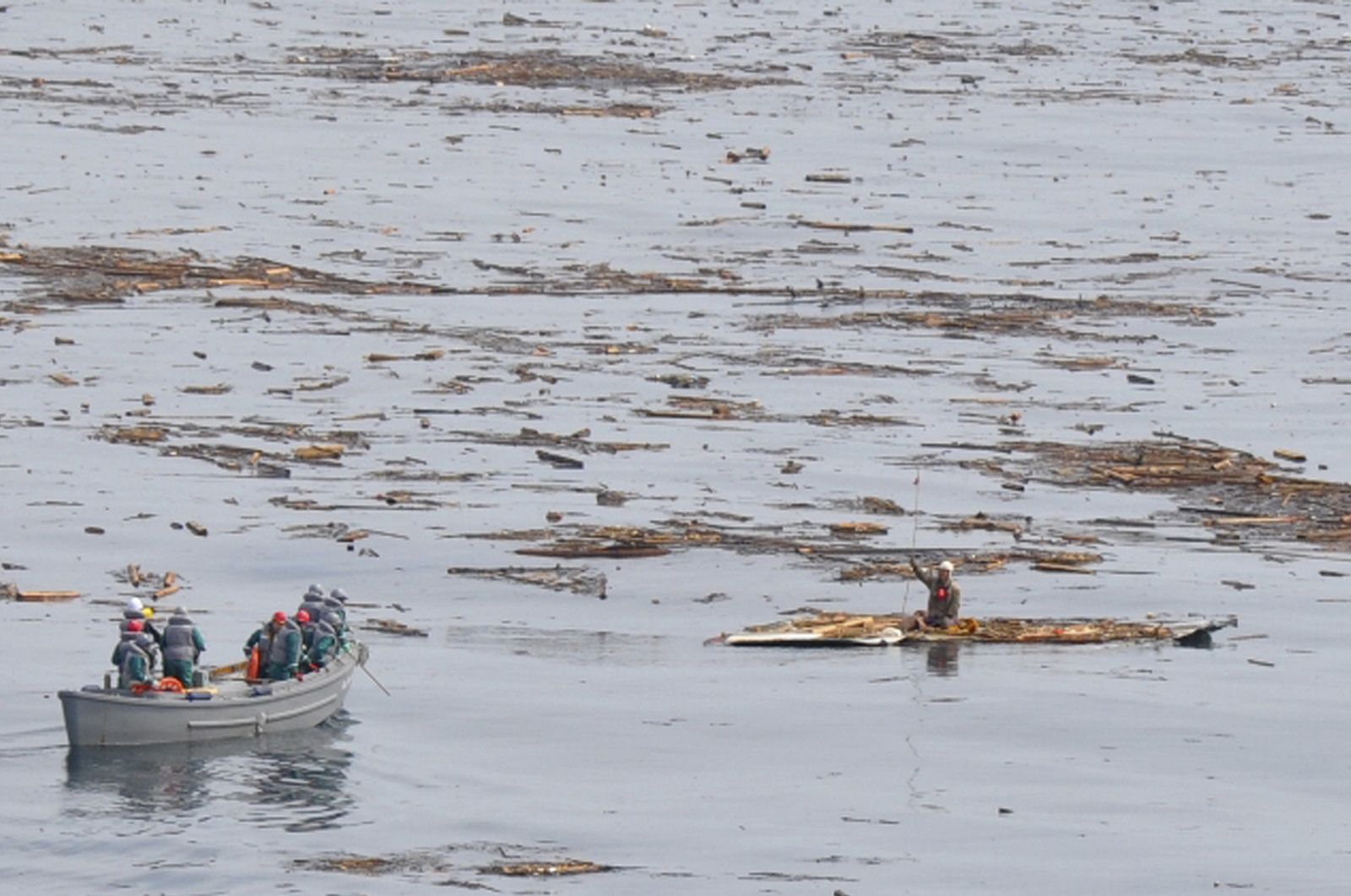
In this photo released by the Japanese Defense Agency, Hiromitsu Shinkawa, right, waves to rescuers before being rescued to a Maritime Self-Defense Force destroyer on Sunday March 13, 2011. When spotted, the 60-year-old man was floating off the coast of Fukushima’s Futaba town on the roof of his house after being swept away in a tsunami. He was in good condition.
Defense Ministry Associated Press
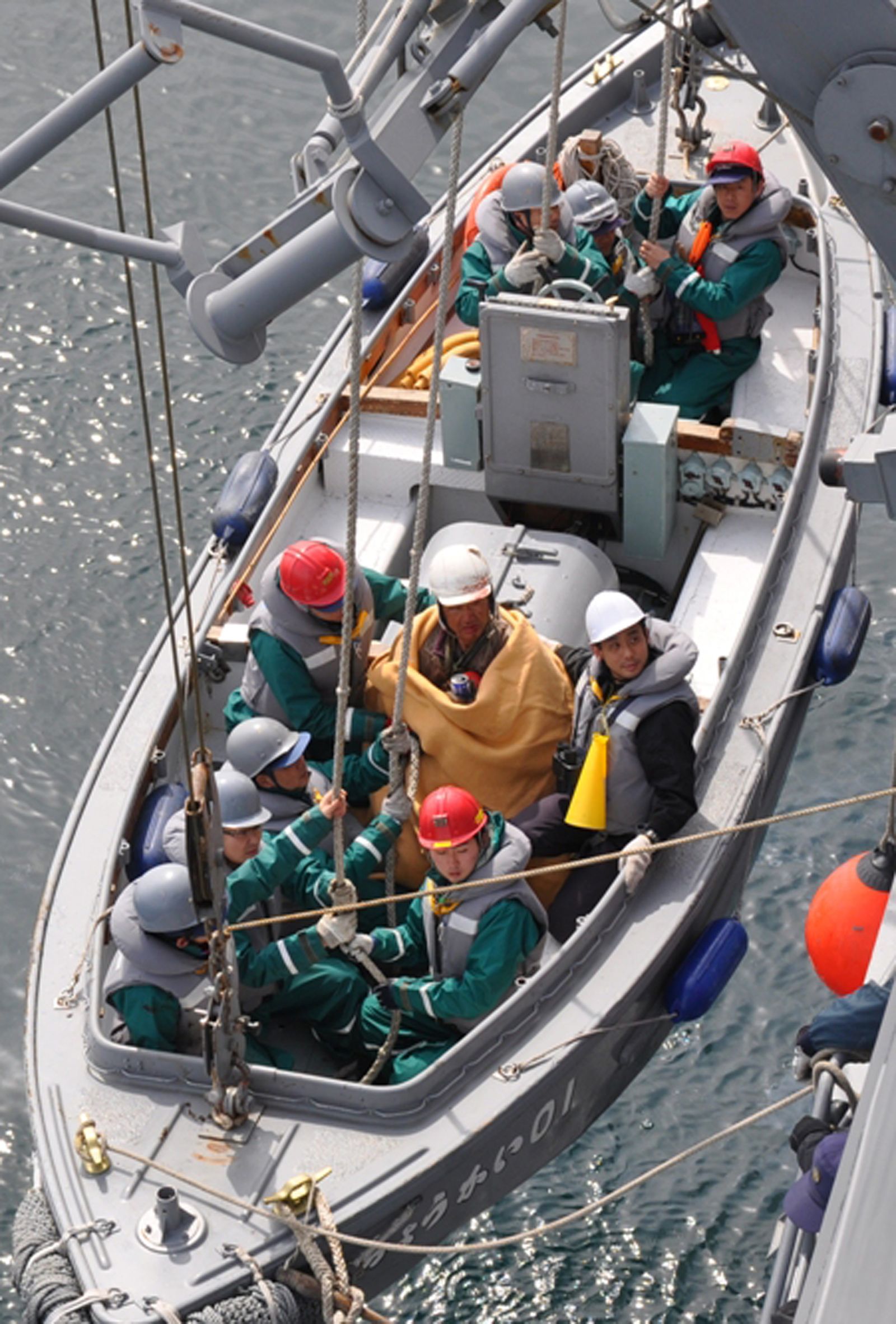
In this photo released by the Japanese Defense Agency, Japanese Hiromitsu Shinkawa, wrapped in a blanket, is lifted to a Maritime Self-Defense Force destroyer following his rescue on Sunday March 13, 2011. When spotted, the 60-year-old man was floating off the coast of Fukushima prefecture’s Futaba town on the roof of his house after being swept away in a tsunami. He was in good condition.
Defense Ministry Associated Press
Associated Press
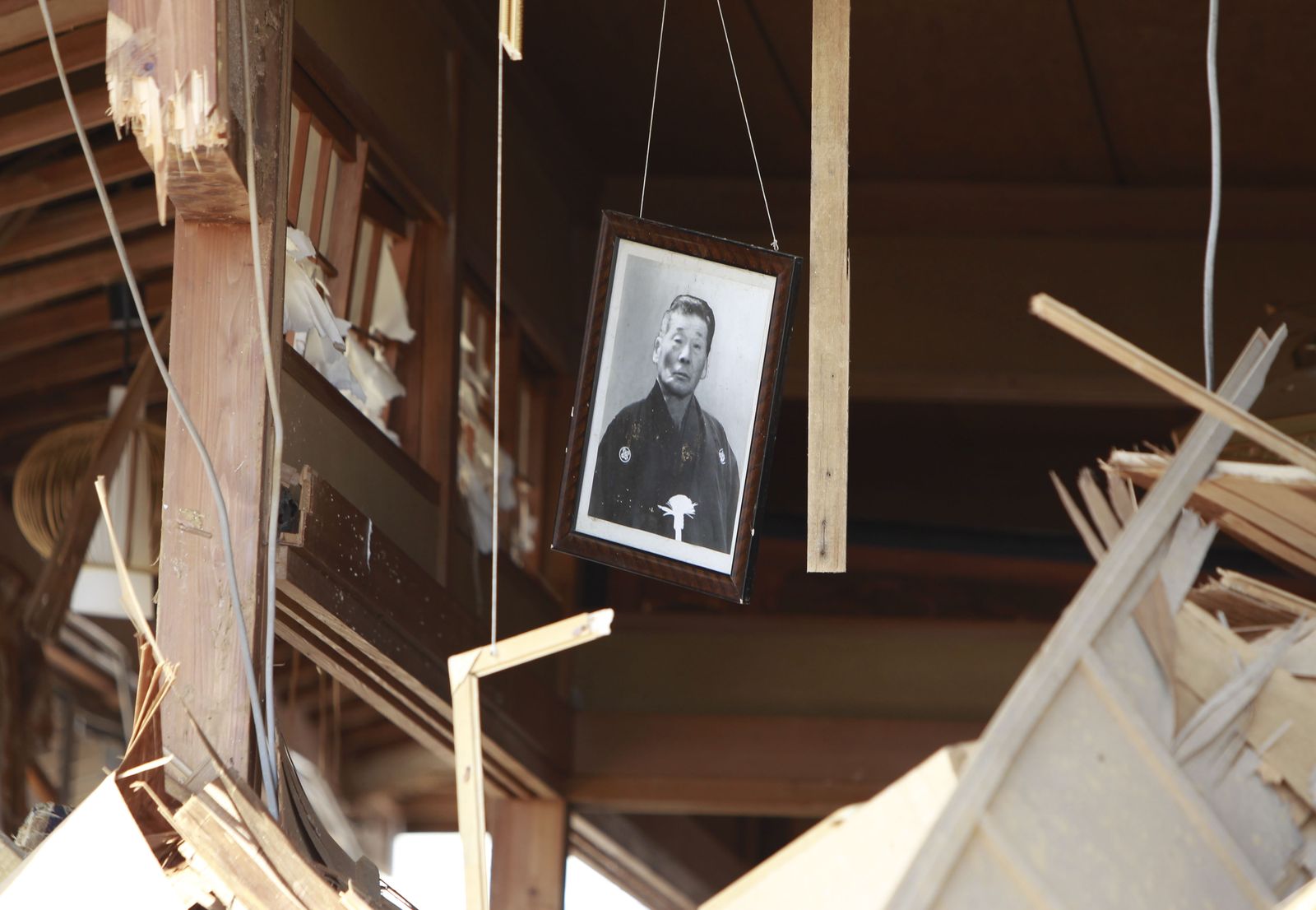
A photo hangs from the remains of a house in the seaside town of Toyoma, northern Japan, Monday, March 14, 2011, three days after a giant quake and tsunami struck the country’s northeastern coast.
Mark Baker Associated Press
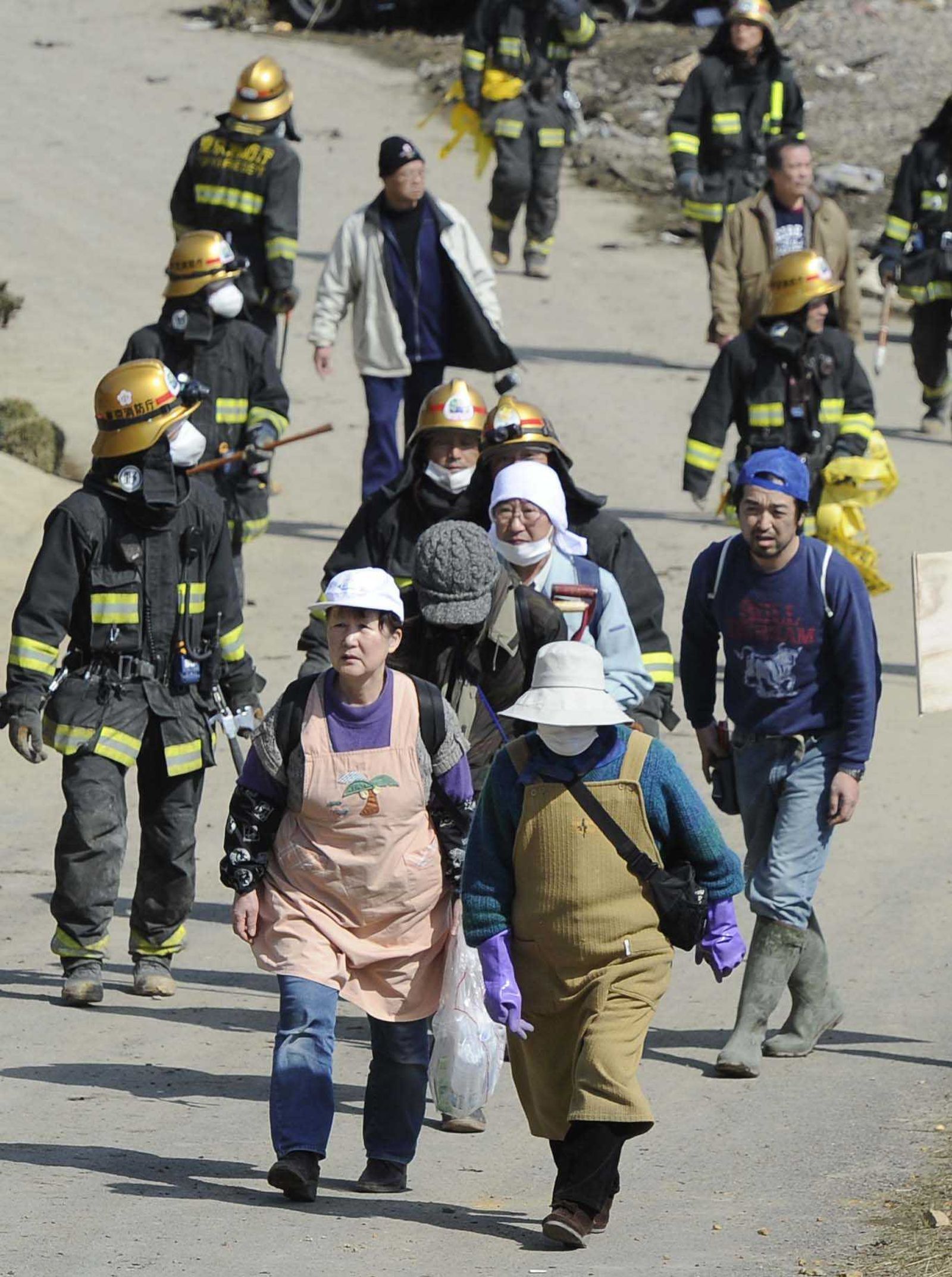
People evacuate to higher place after a tsunami warning was issued Monday, March 14, 2011 in Kesennuma, Miyagi Prefecture, Japan. The coutry’s eastern coast was hit by the biggest recorded earthquake on Friday.
Kyodo News Associated Press
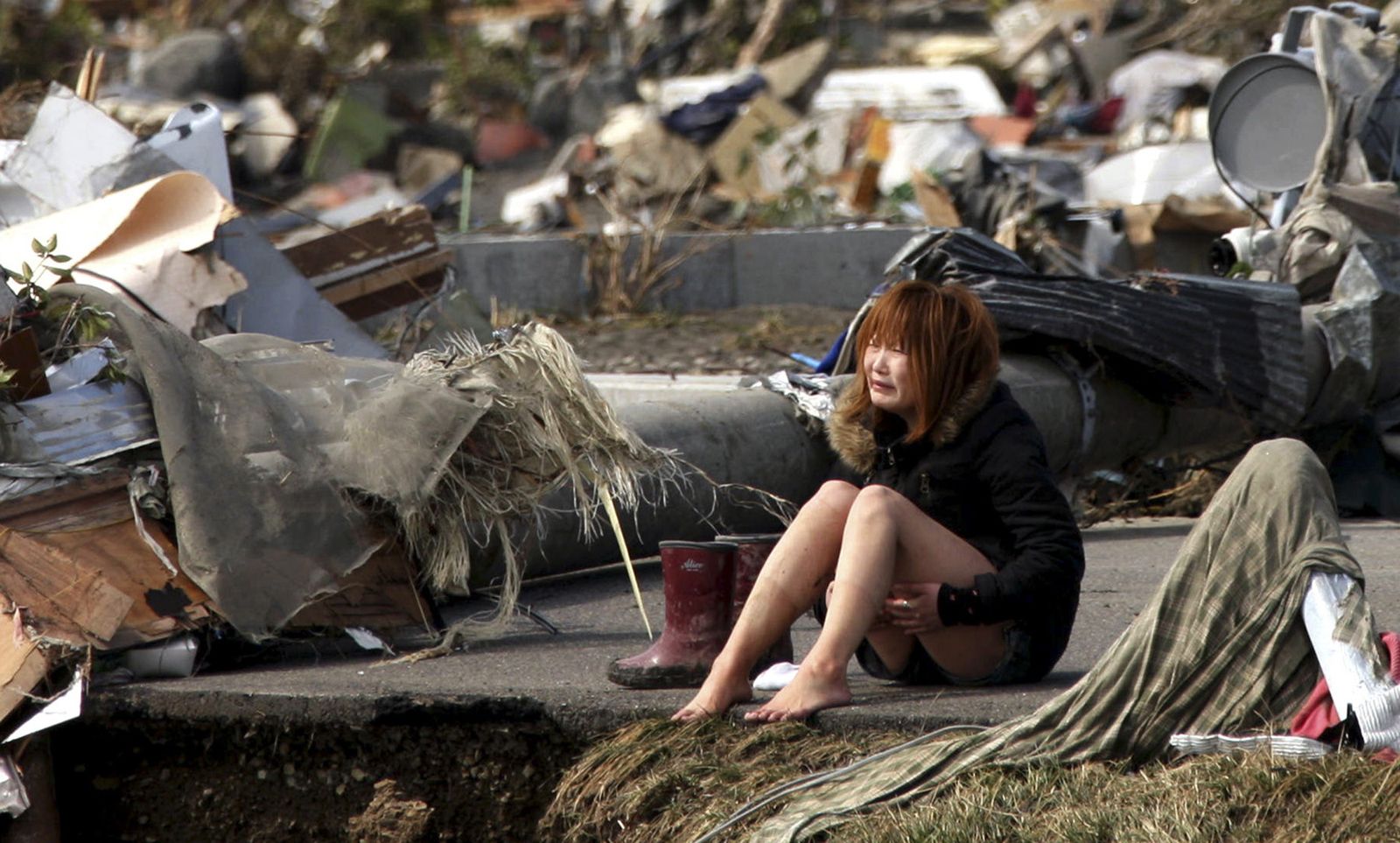
A woman reacts amidst debris caused by Friday’s massive earthquake and the ensuing tsunami, in Natori, northern Japan Sunday, March 13, 2011.
Asahi Shimbun, Toshiyuki Tsunenari Associated Press
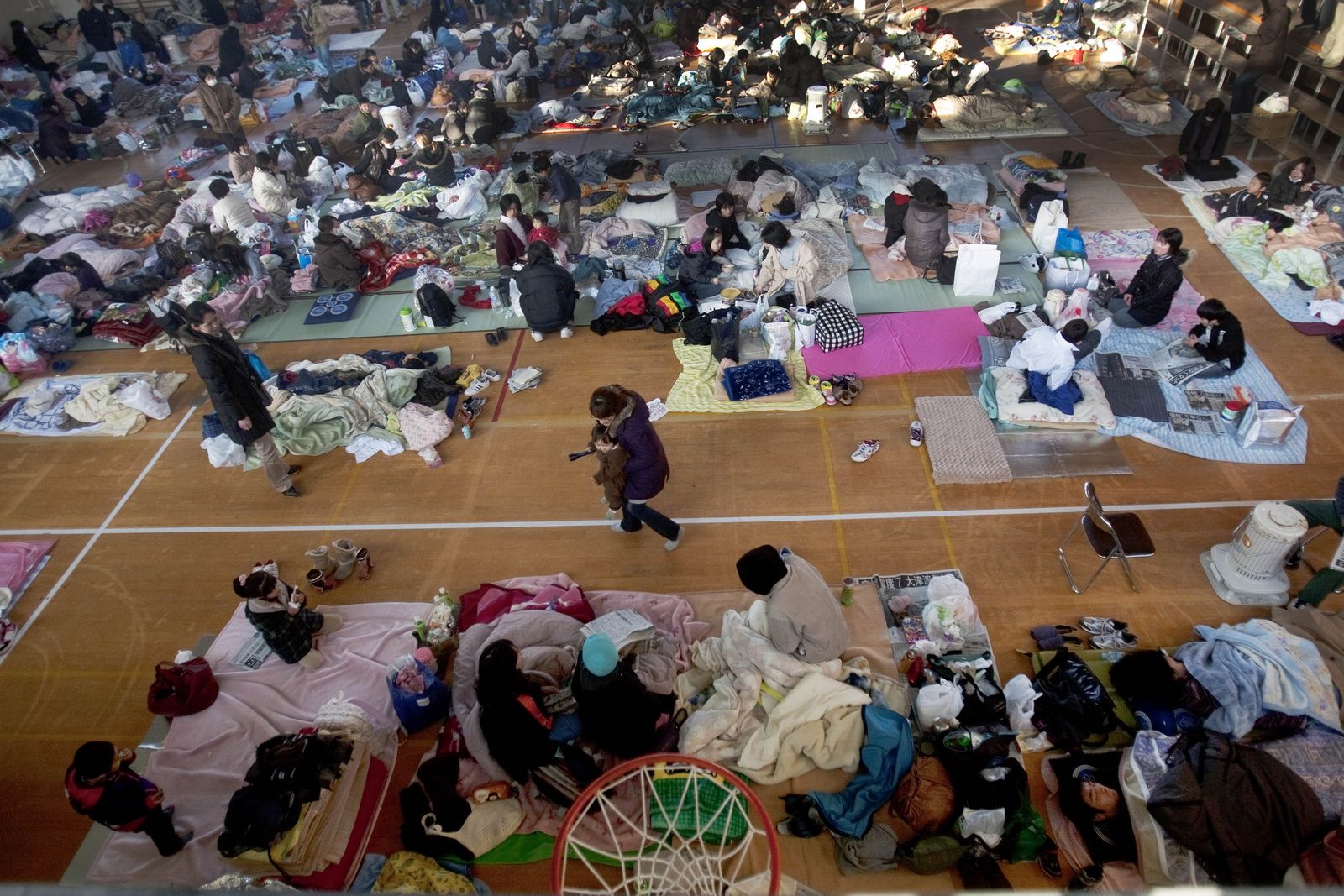
Japanese refugees rest inside a school gymnasium where hundreds took shelter in Sendai, northeastern Japan, on Monday, March 14, 2011 following Friday’s massive earthquake and the ensuing tsunami.
David Guttenfelder Associated Press
Associated Press
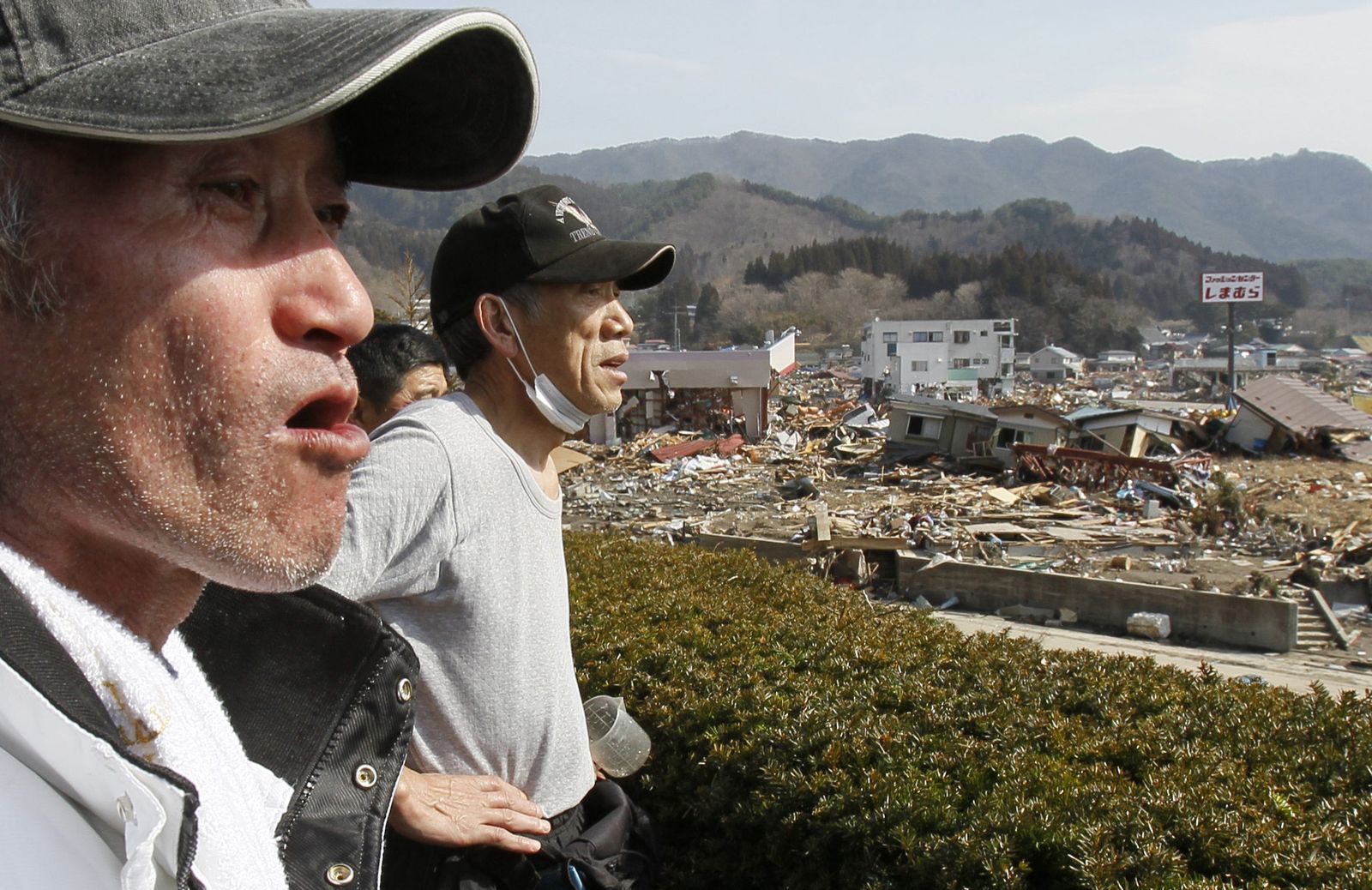
Residents evacuate and watch the coastal area after Tsunami warning was issued in Yamada, Iwate Prefecture, northern Japan Monday, March 14, 2011 following Friday’s massive earthquake and the ensuing tsunami.
Kyodo News Associated Press
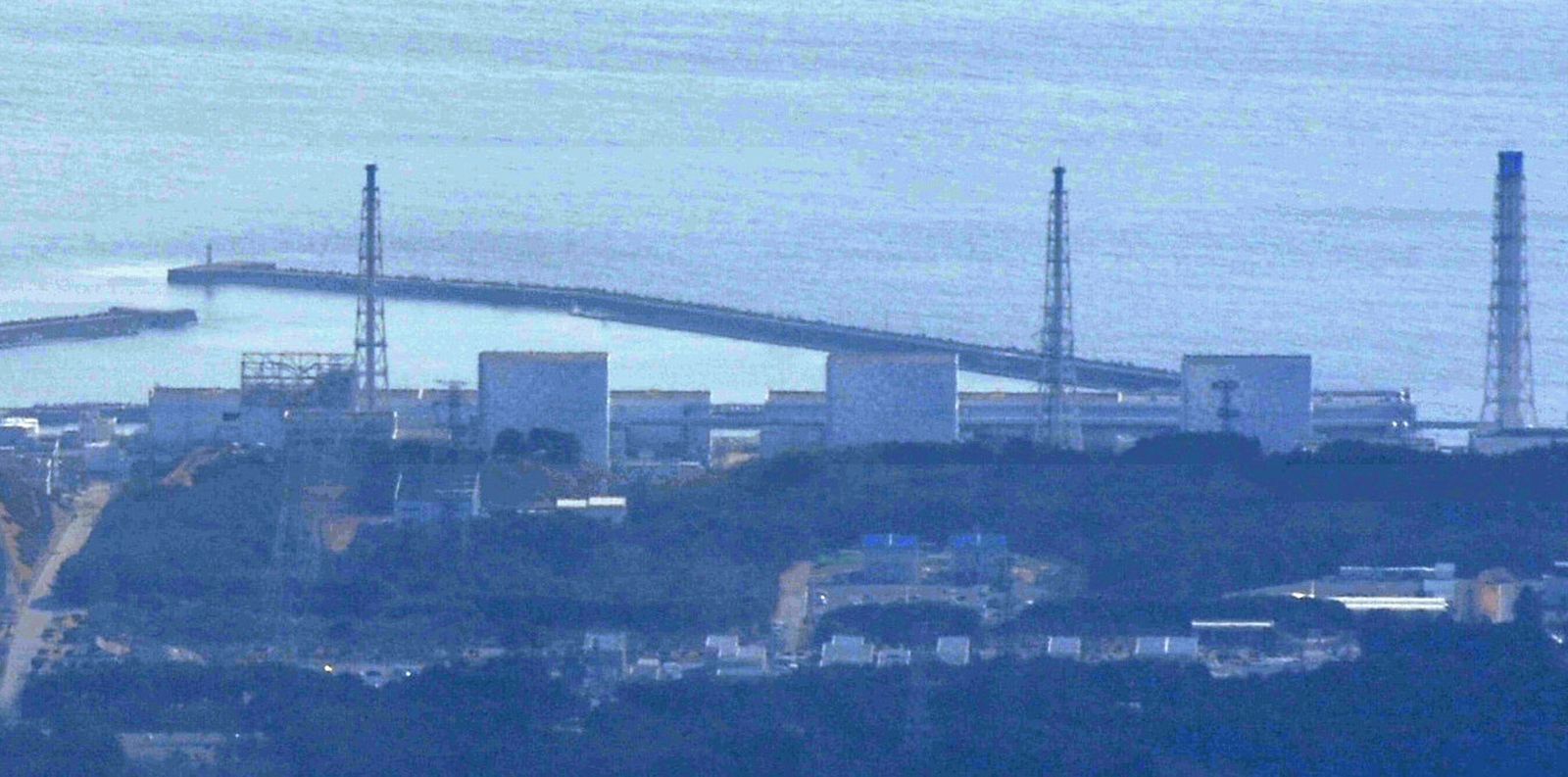
No. 3 unit of the Fukushima Daiichi Nuclear Power Plant, is seen, 2nd from right, with unit 1 reactor, left, with its top part of walls blown off after Saturday’s explosion seen in Okumamachi, Fukushima Prefecture (state) , northern Japan Monday, March 14, 2011. Japanese officials say they believe a hydrogen explosion has occurred at the nuclear plant, similar to an earlier one at a different unit in the facility.
Kyodo News Associated Press
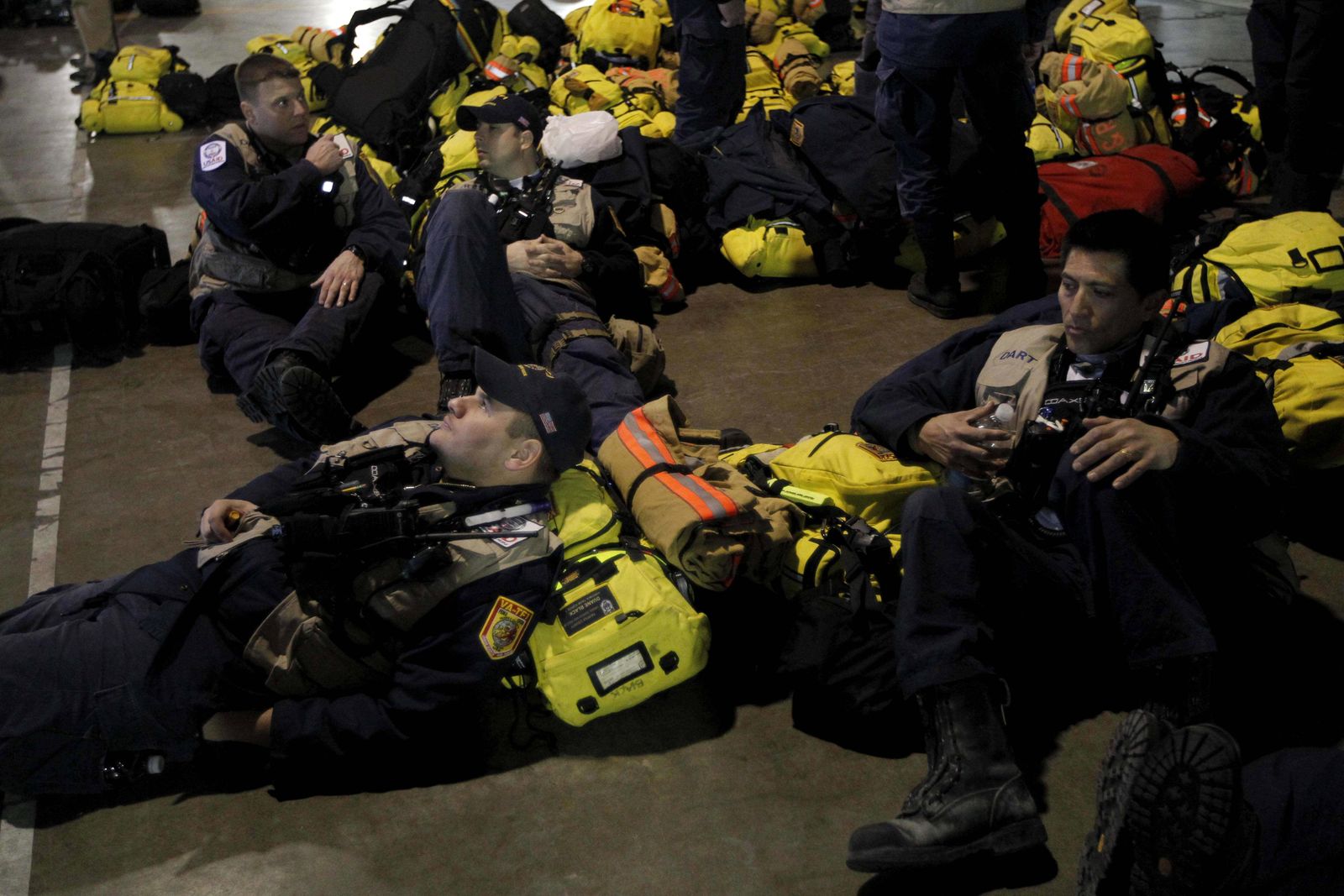
Members of an urban search and rescue team from Fairfax County, Virginia, in the U.S., wait to be deployed after arriving at the Misawa U.S. air force base in Misawa, Monday, March 14, 2011. Two teams from the U.S. with combined numbers of around 150 personnel have arrived in northern Japan to help in the aftermath of the earthquake and tsunami.
Matt Dunham Associated Press